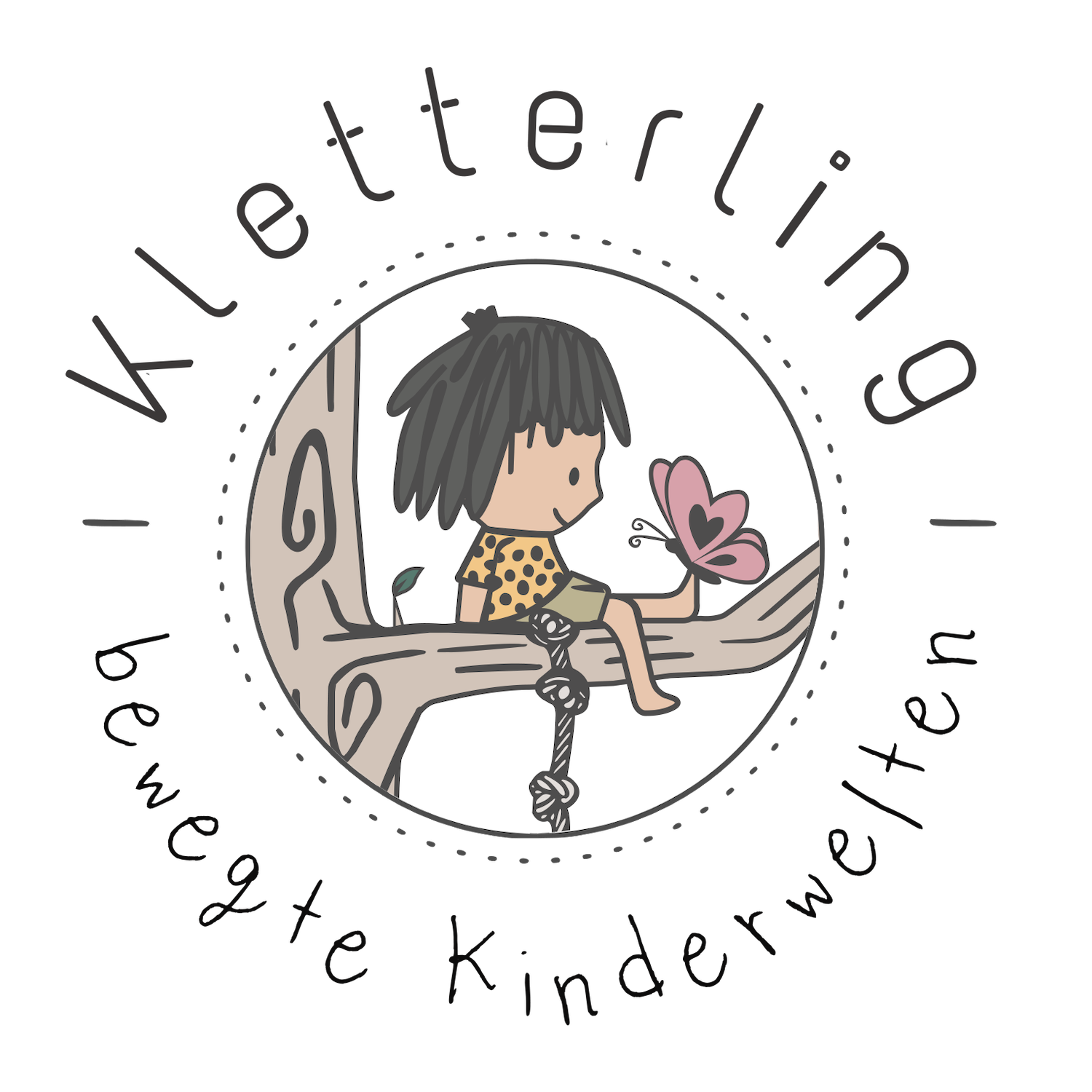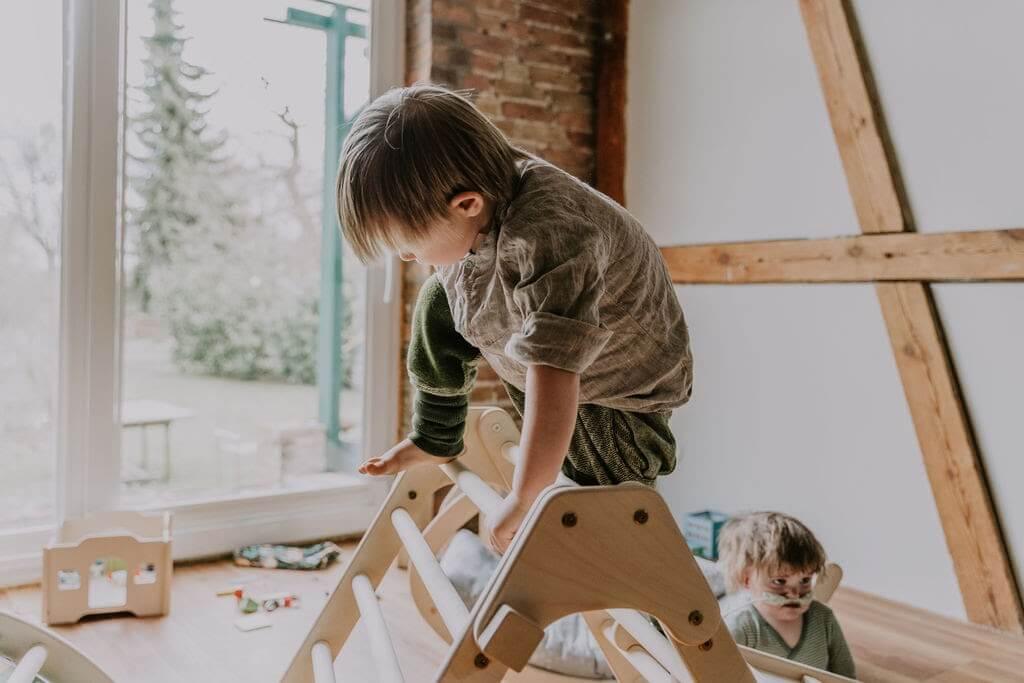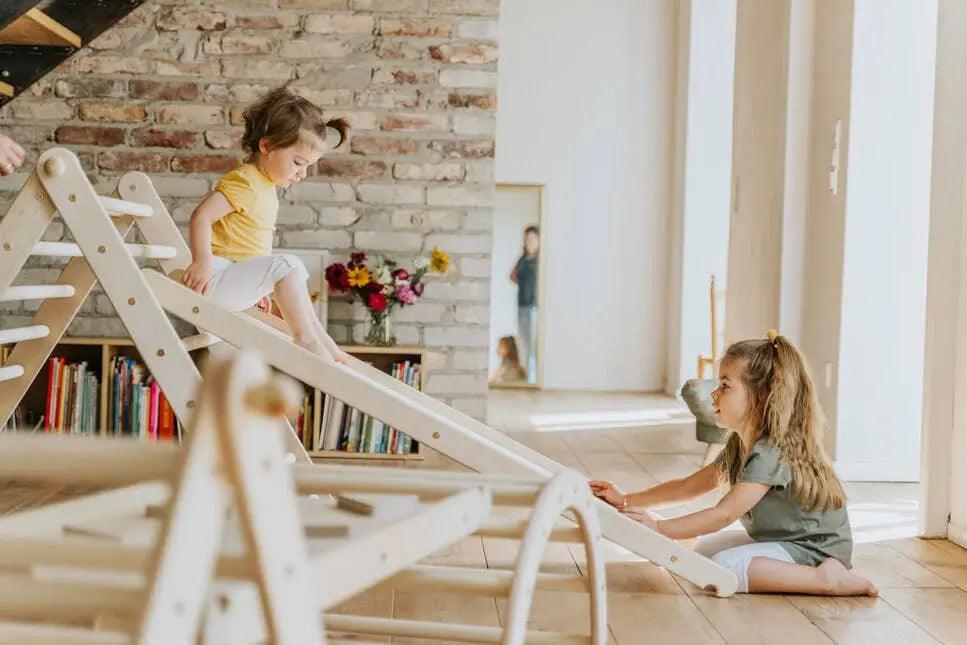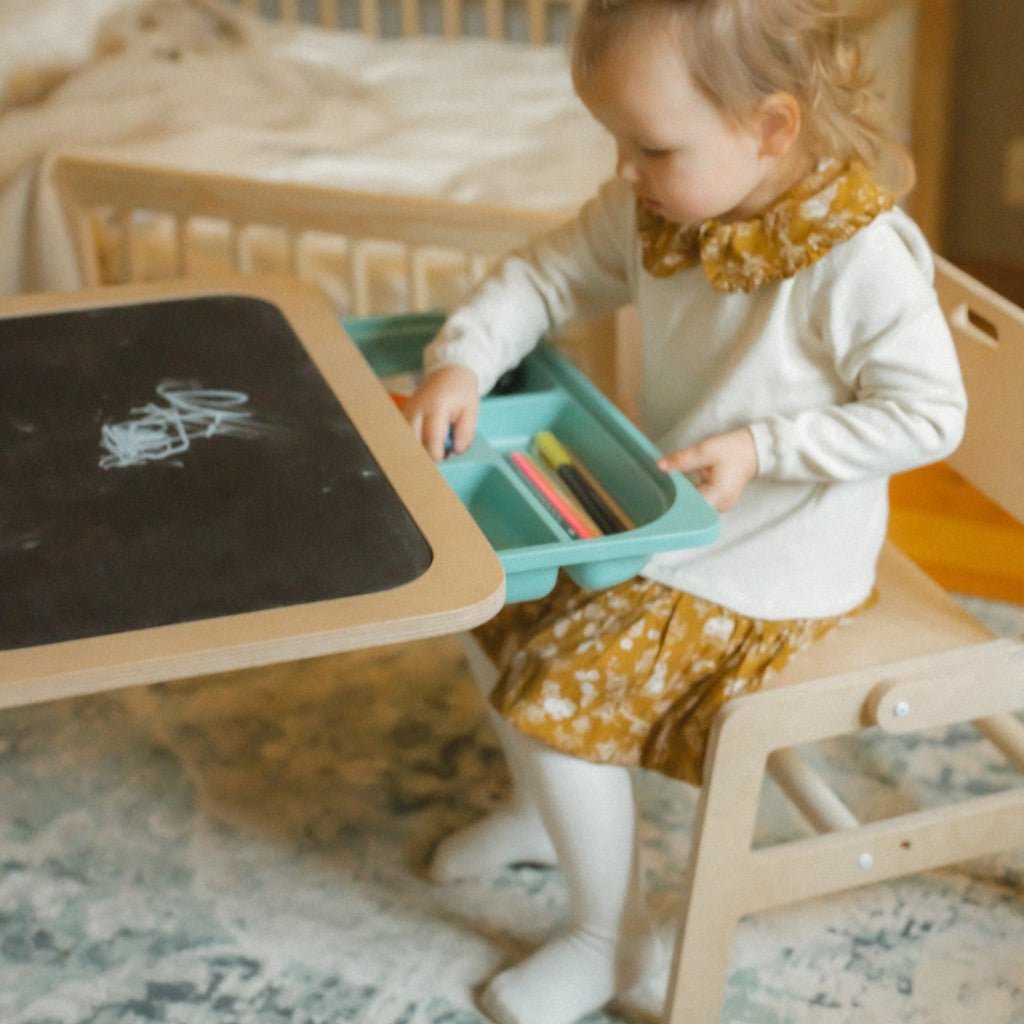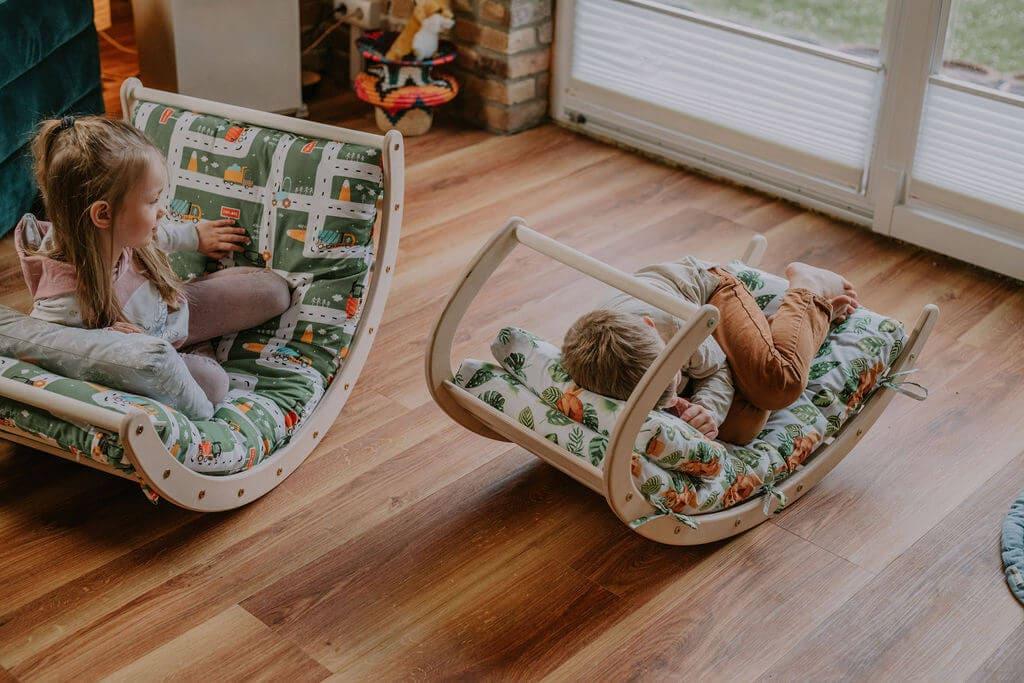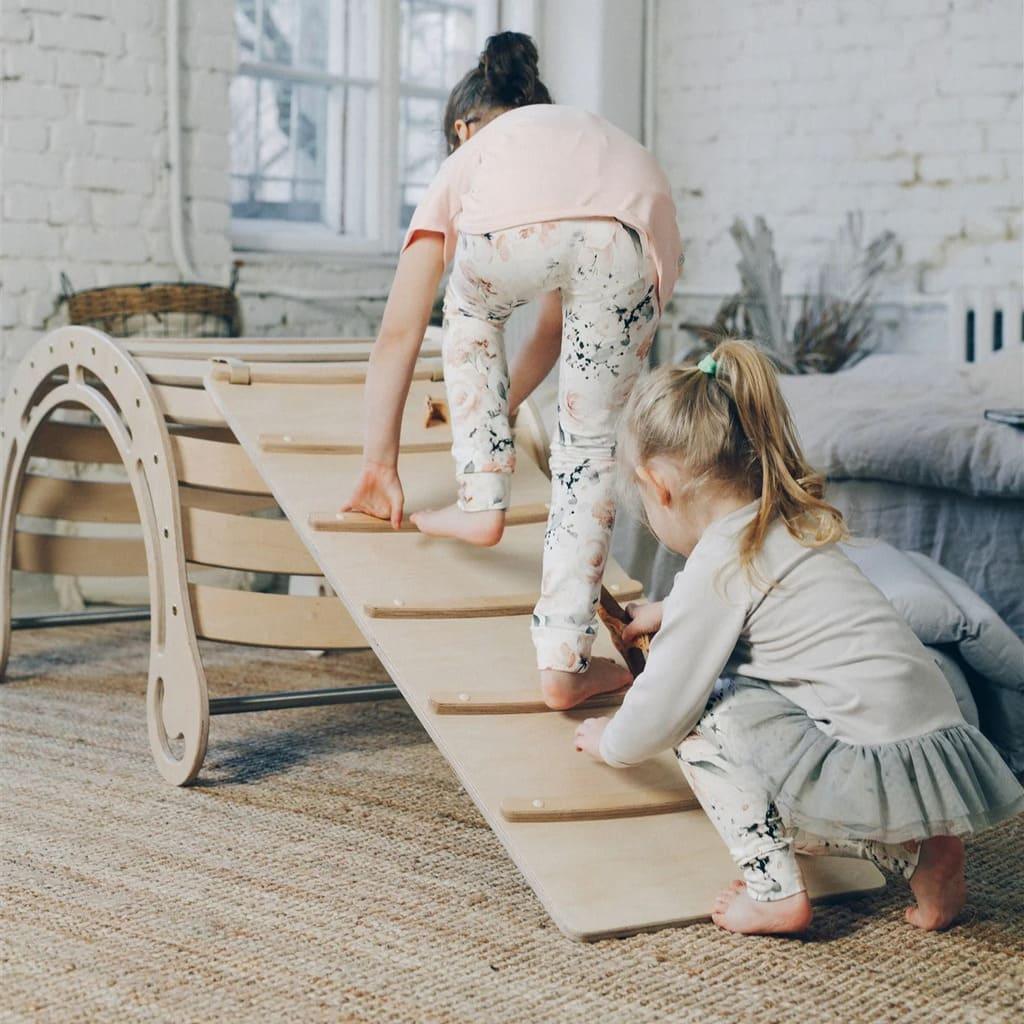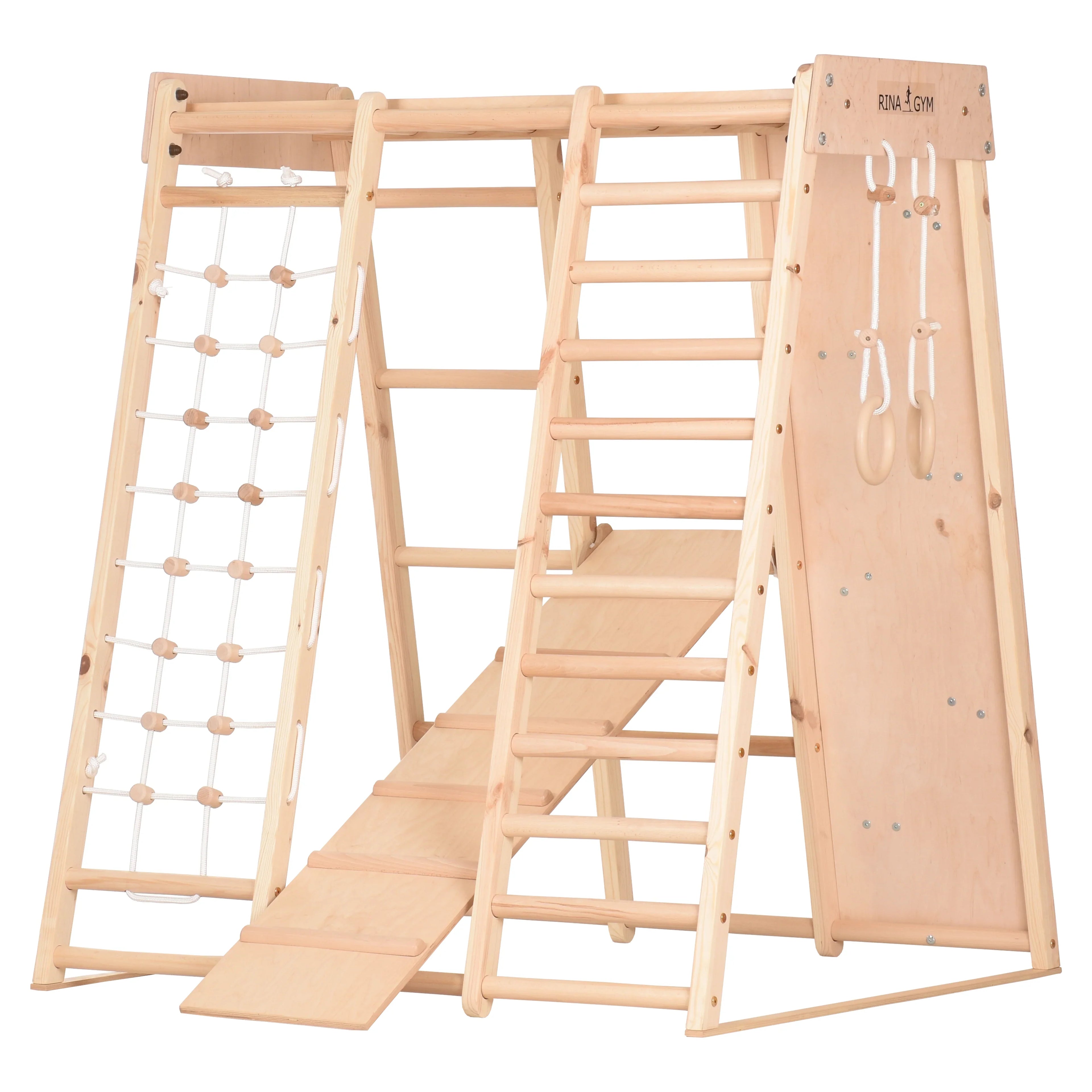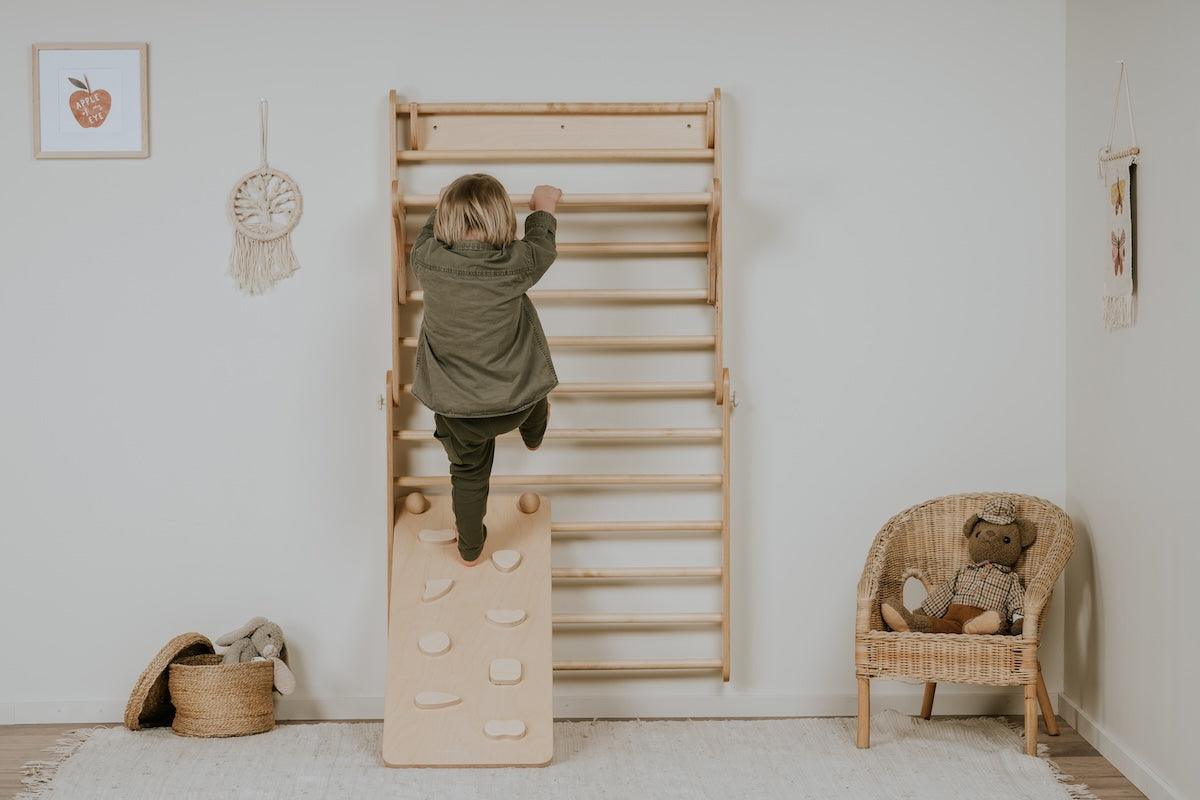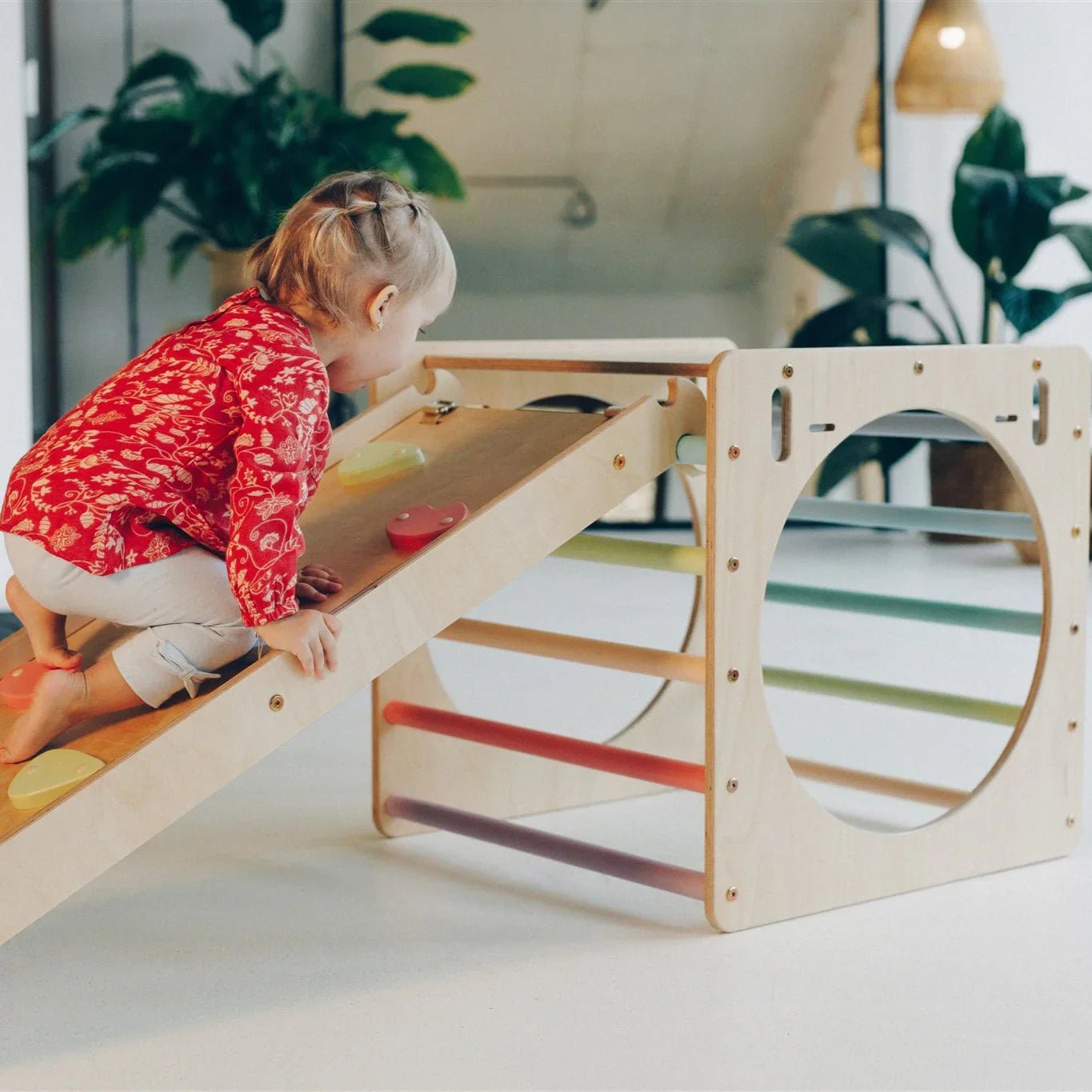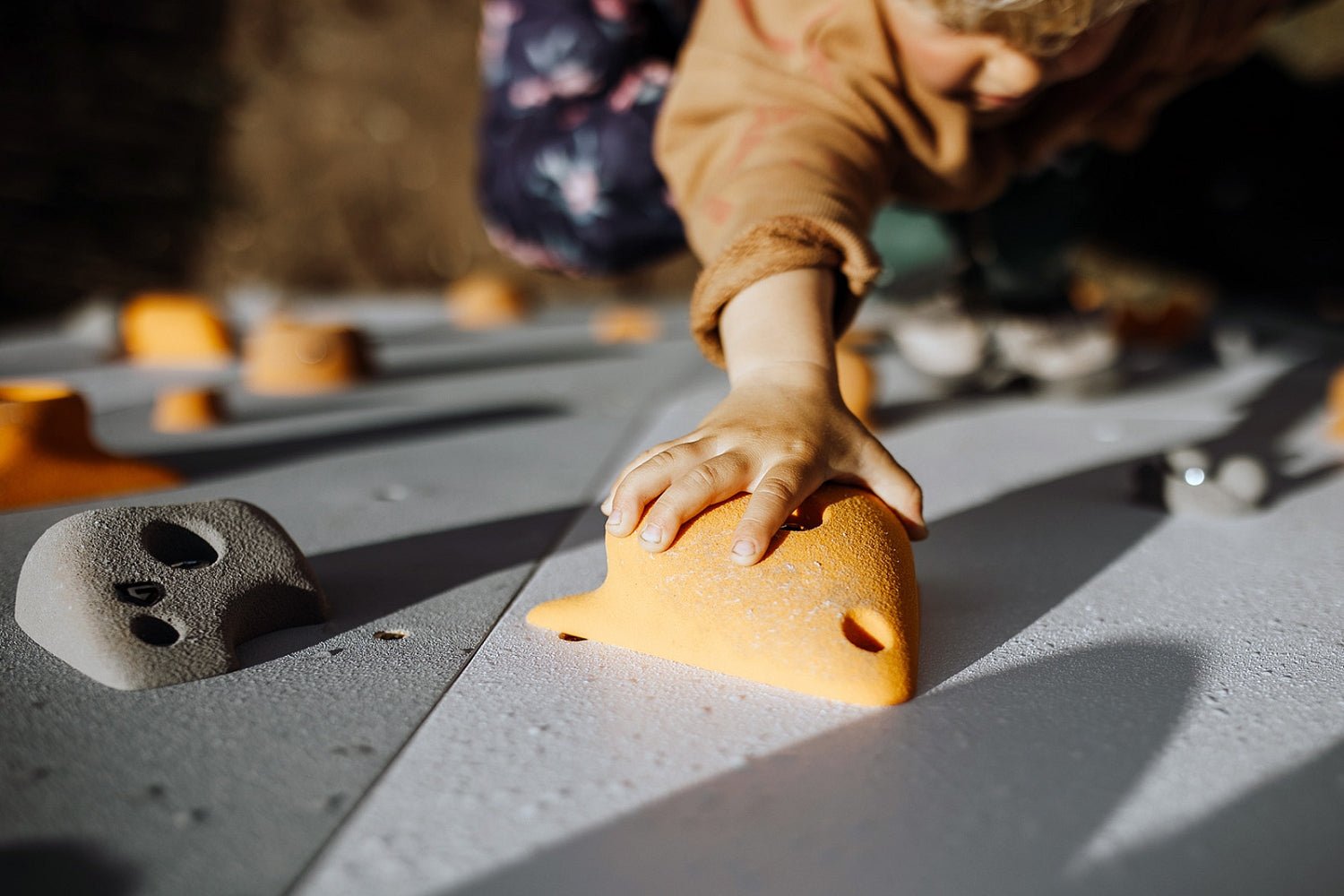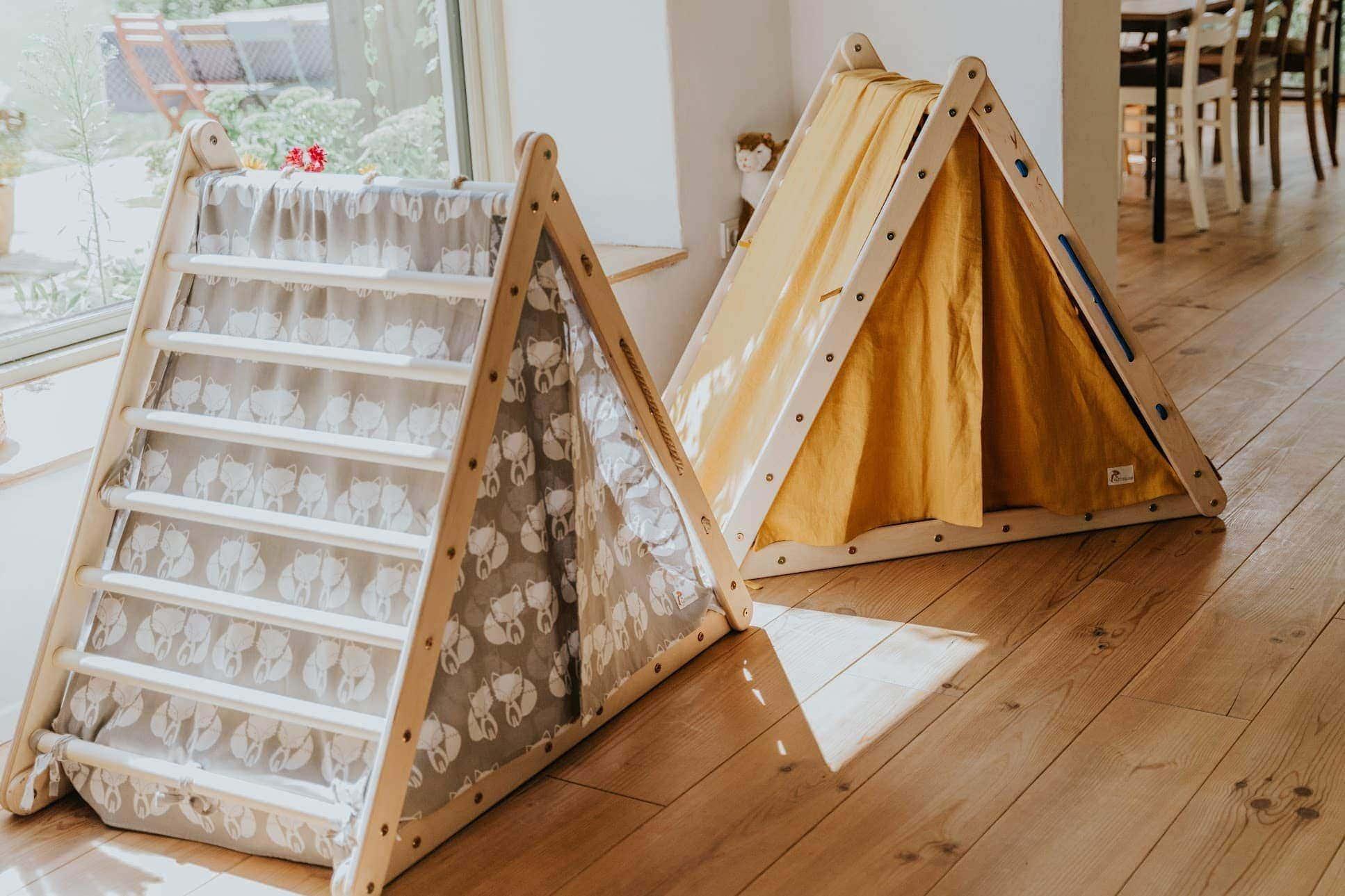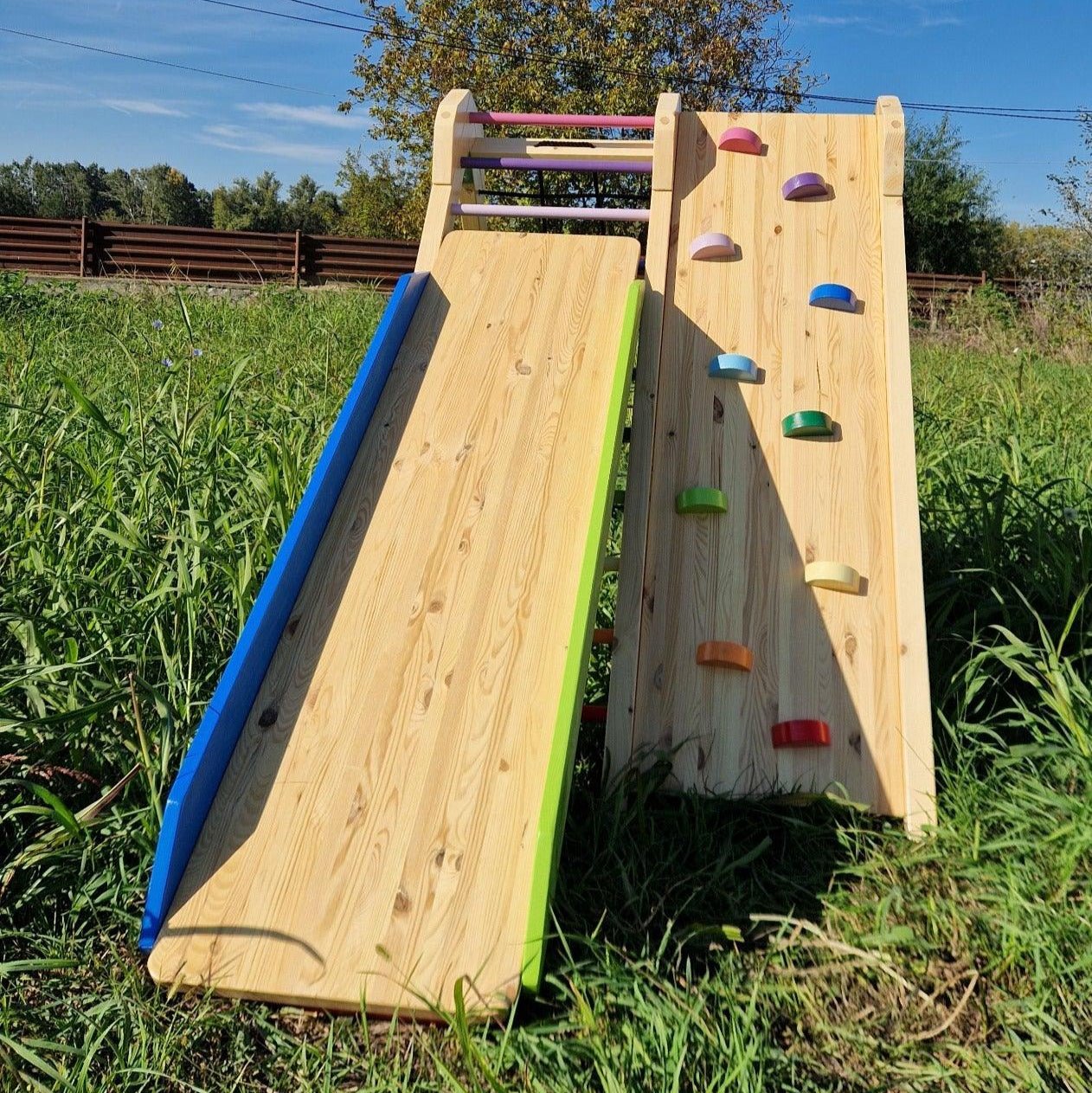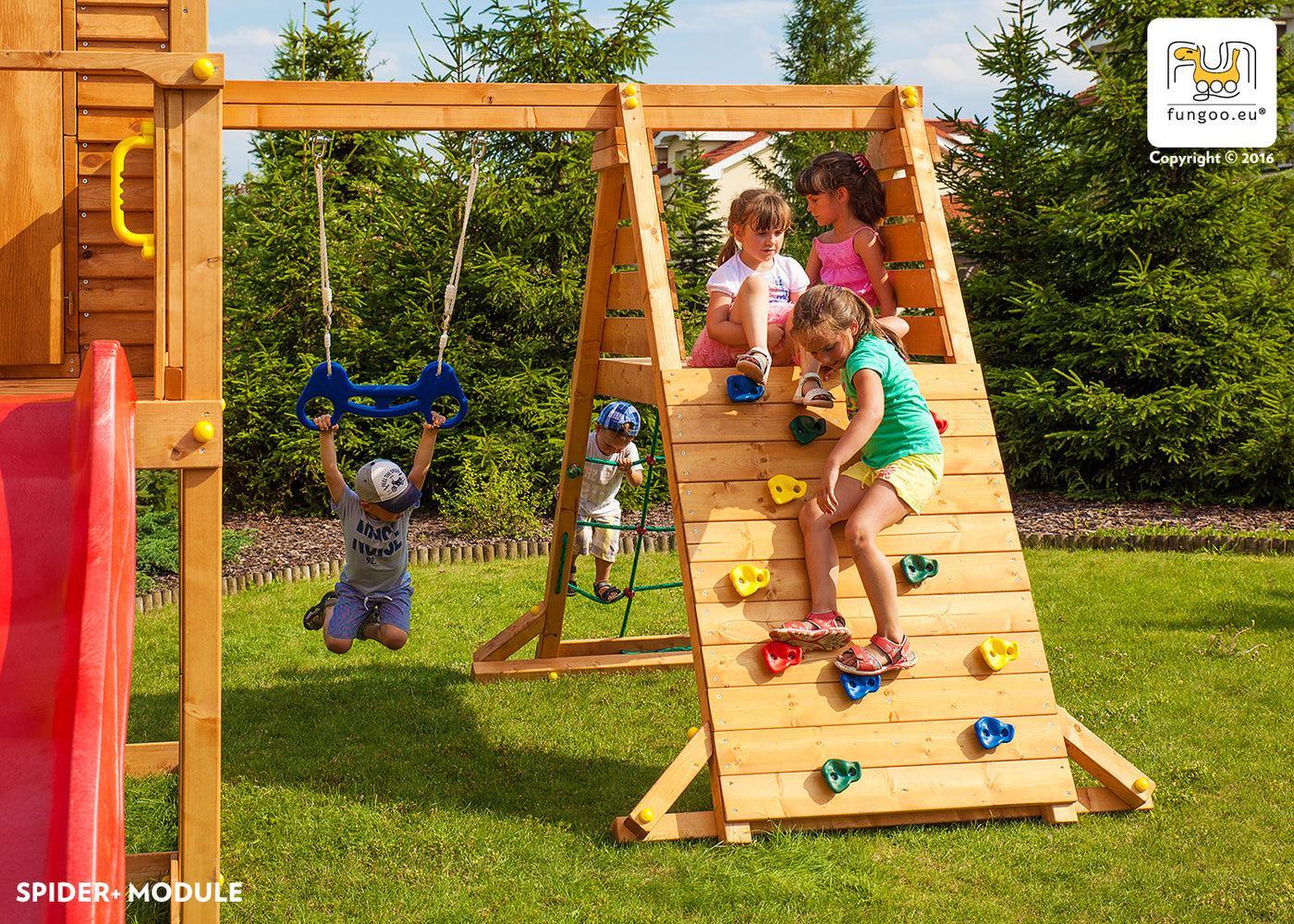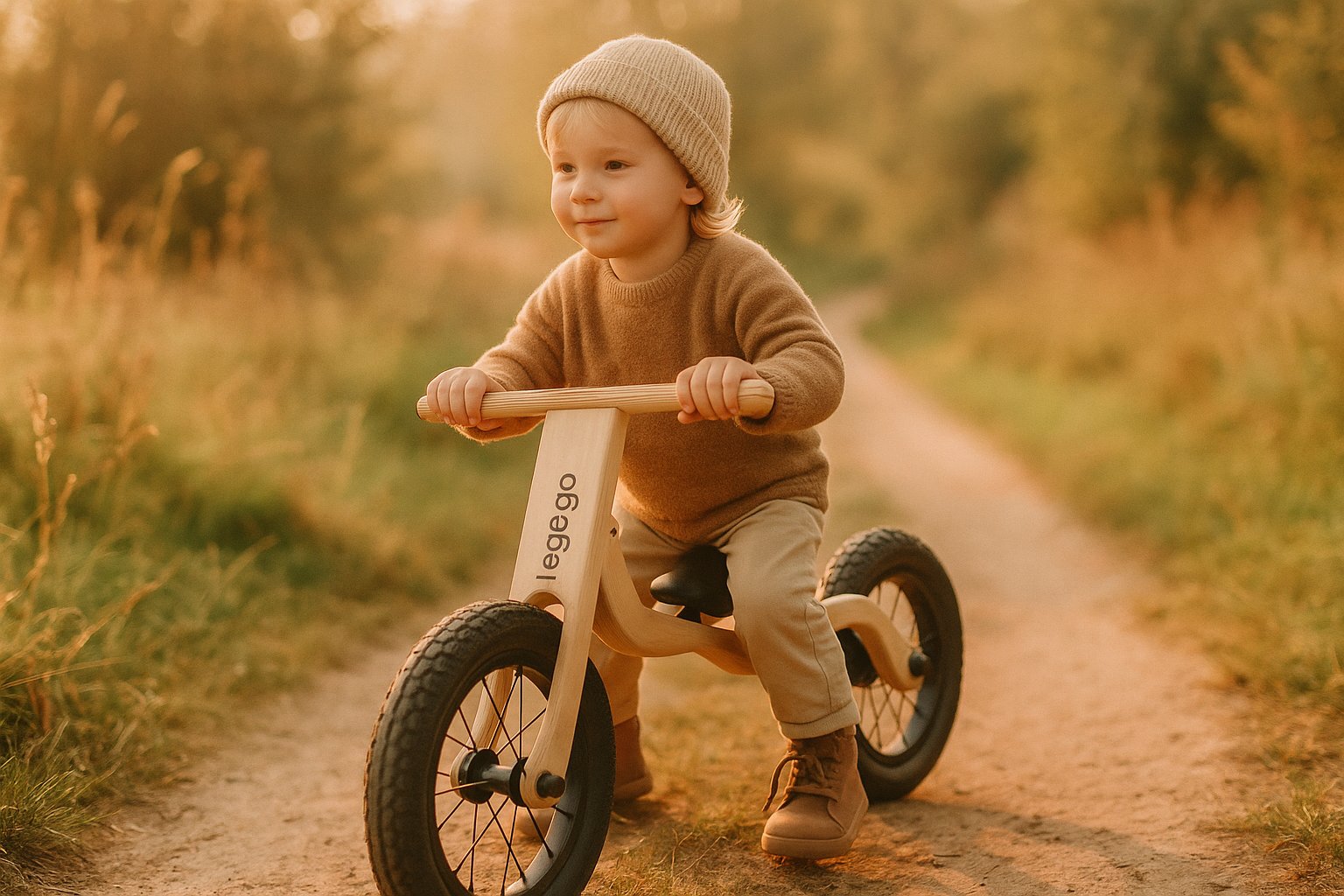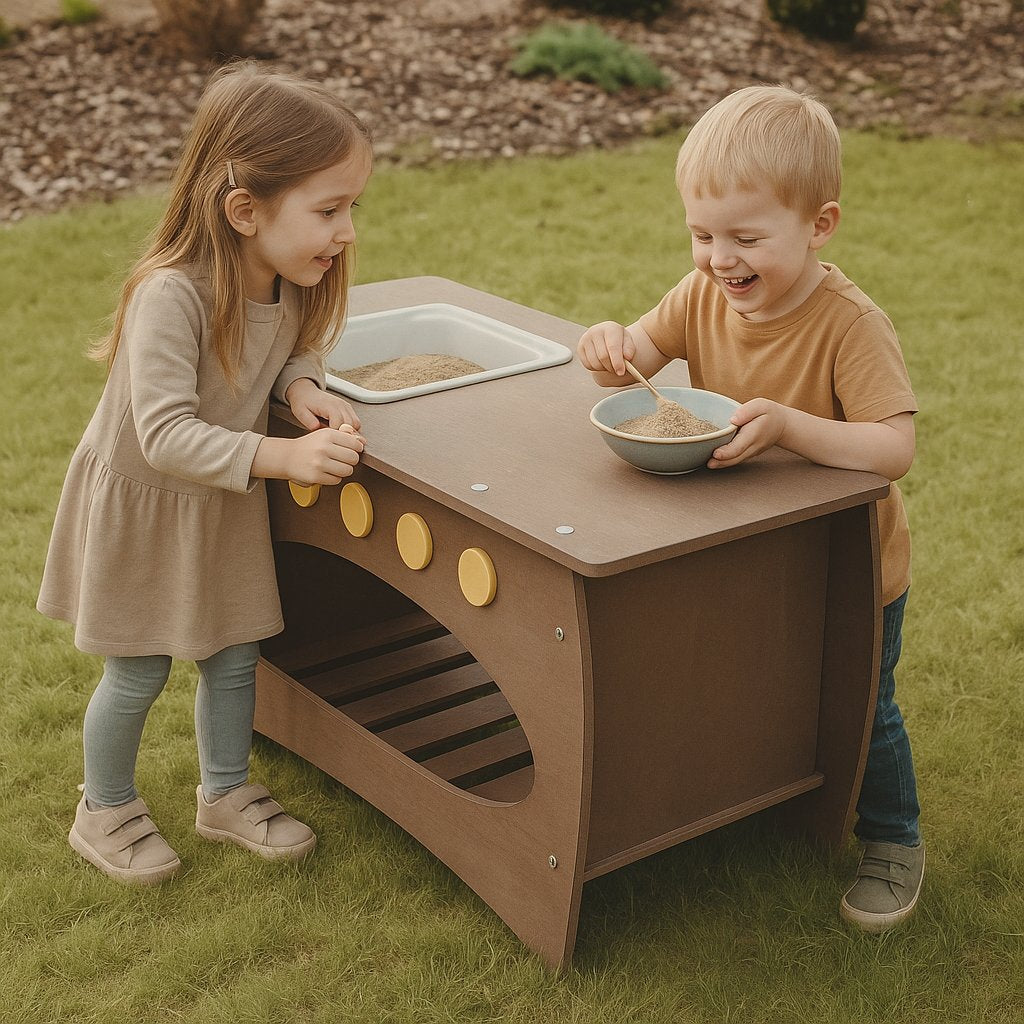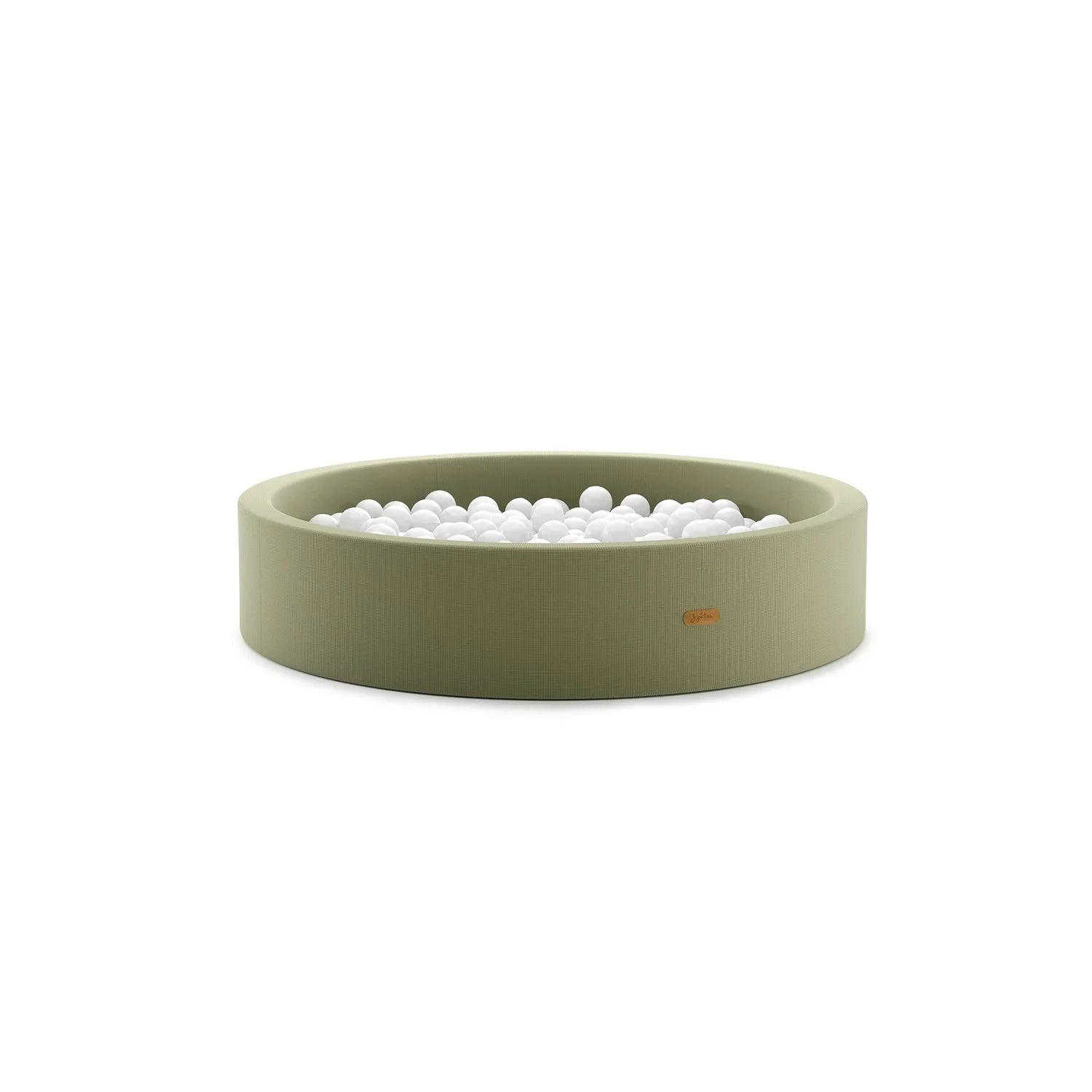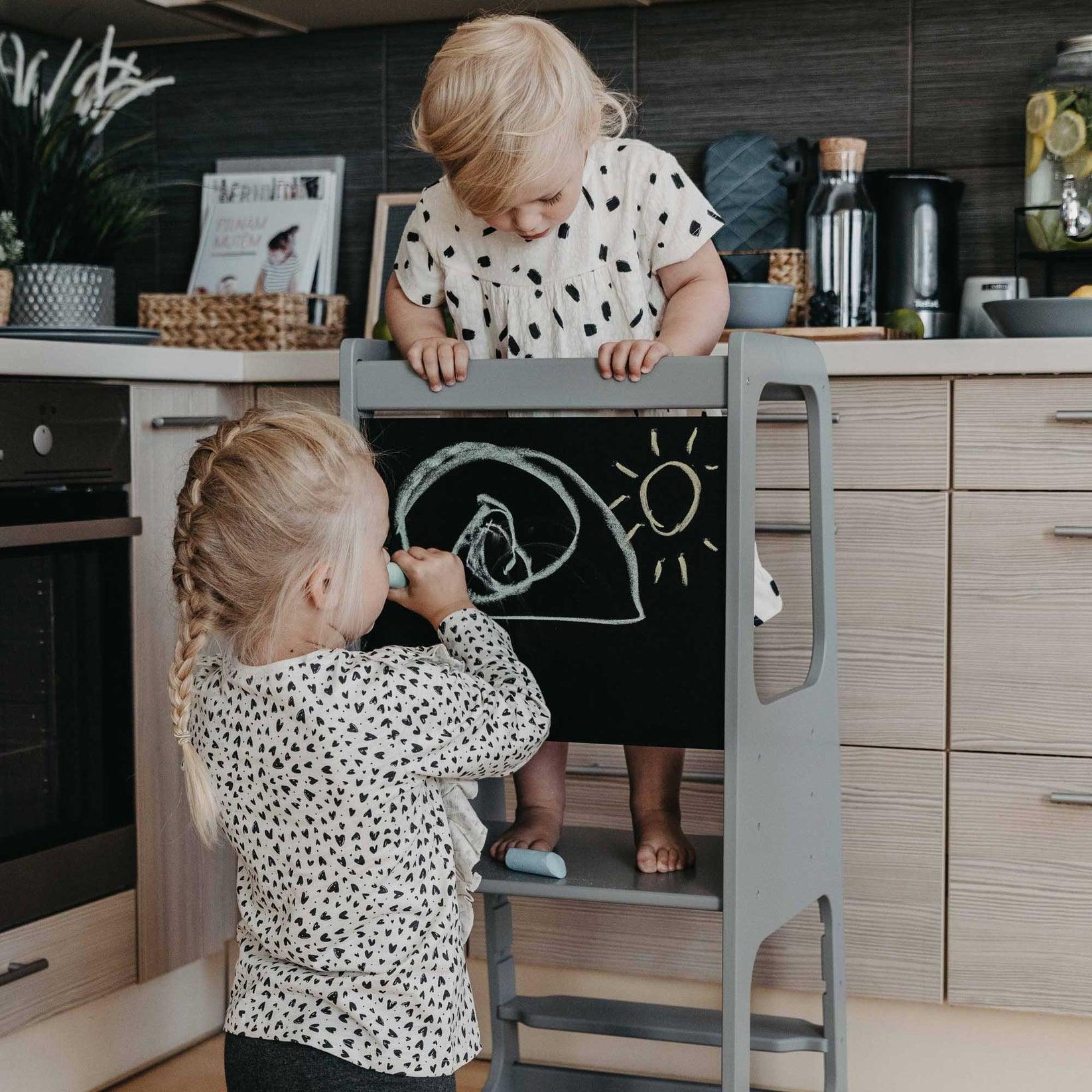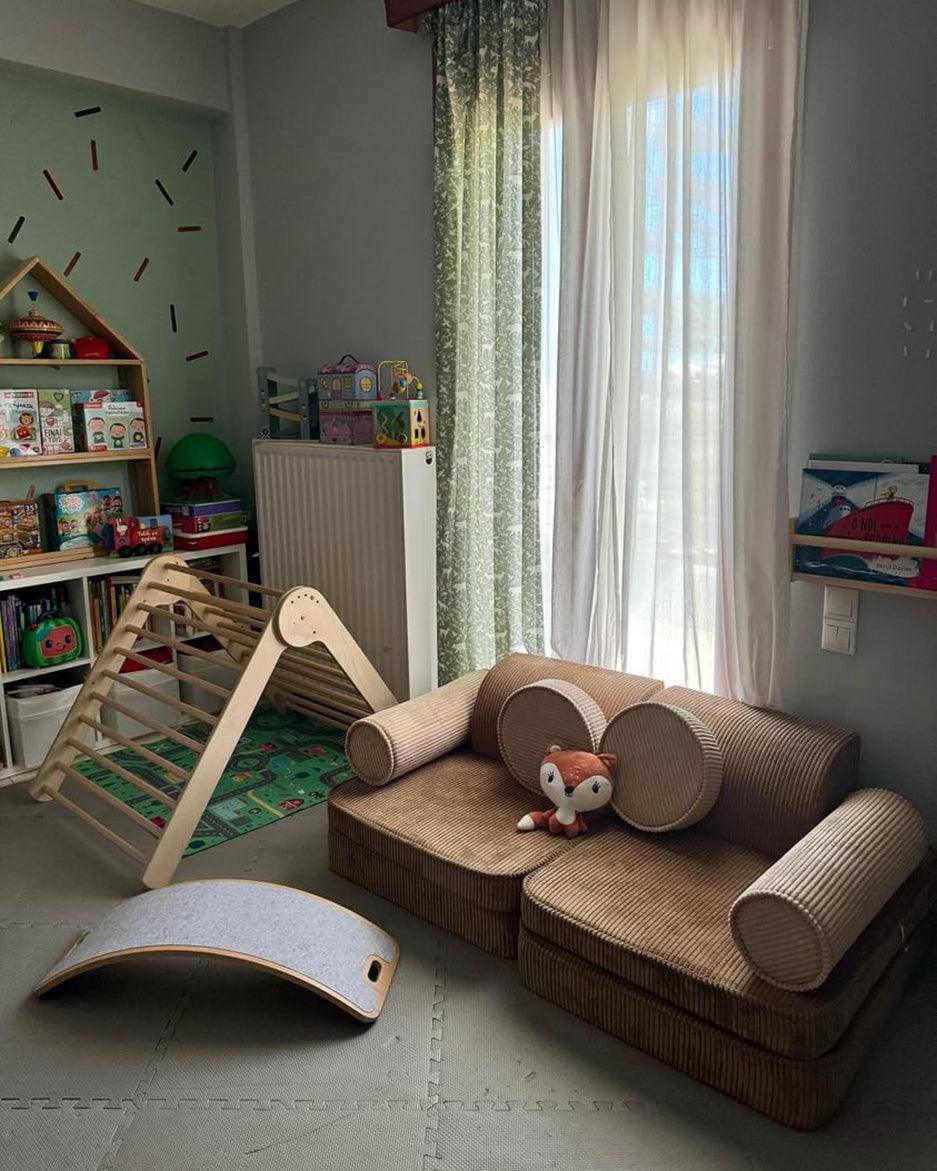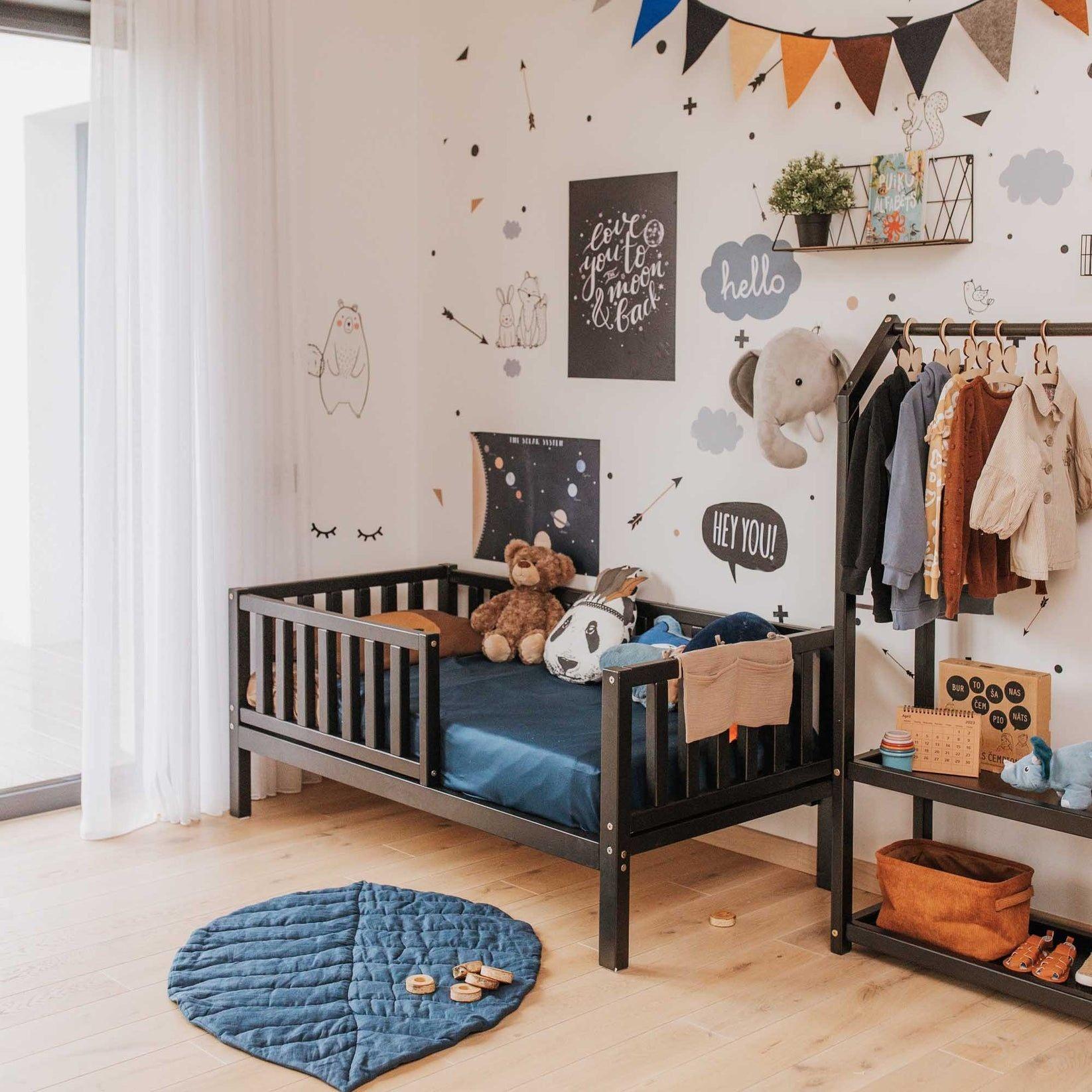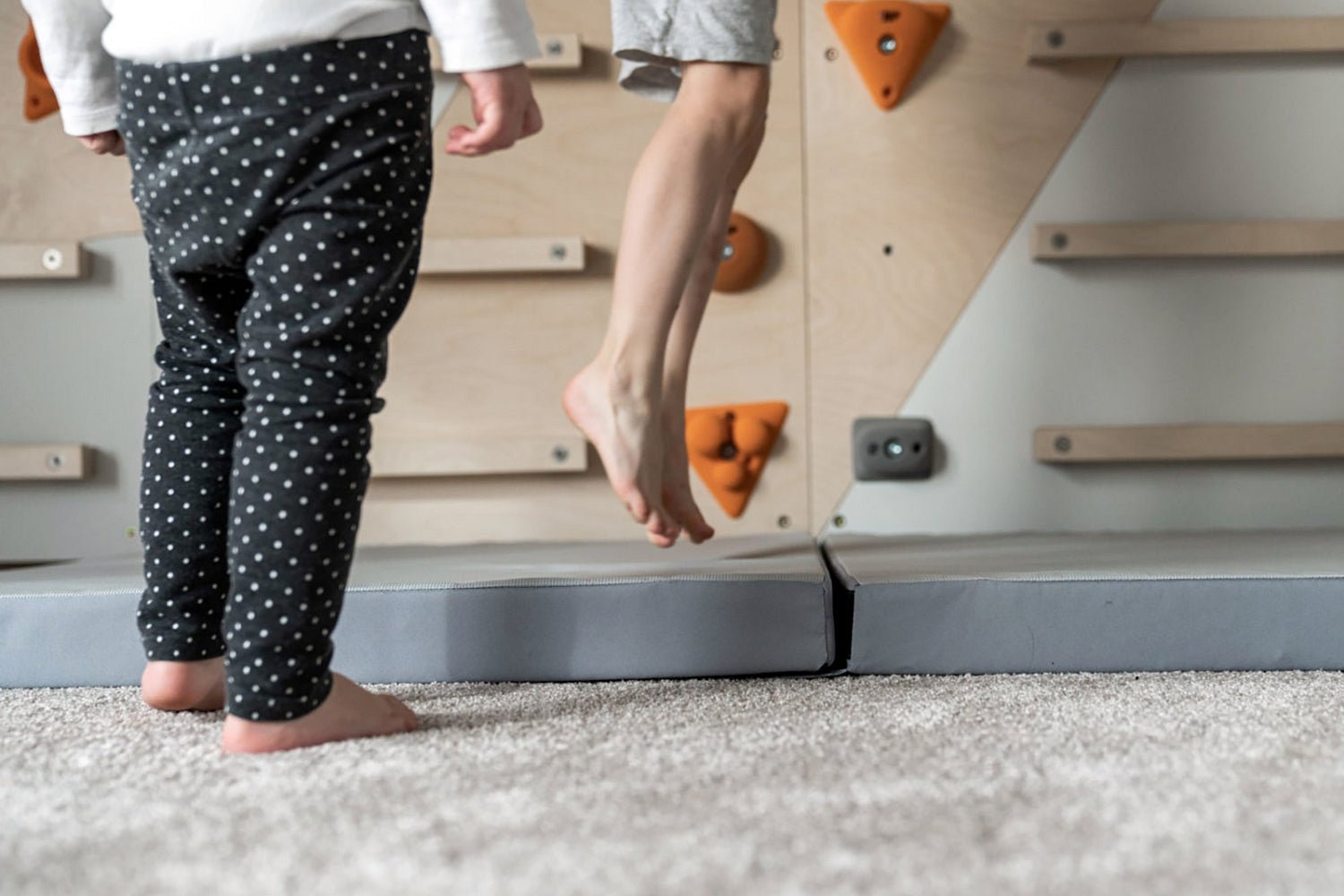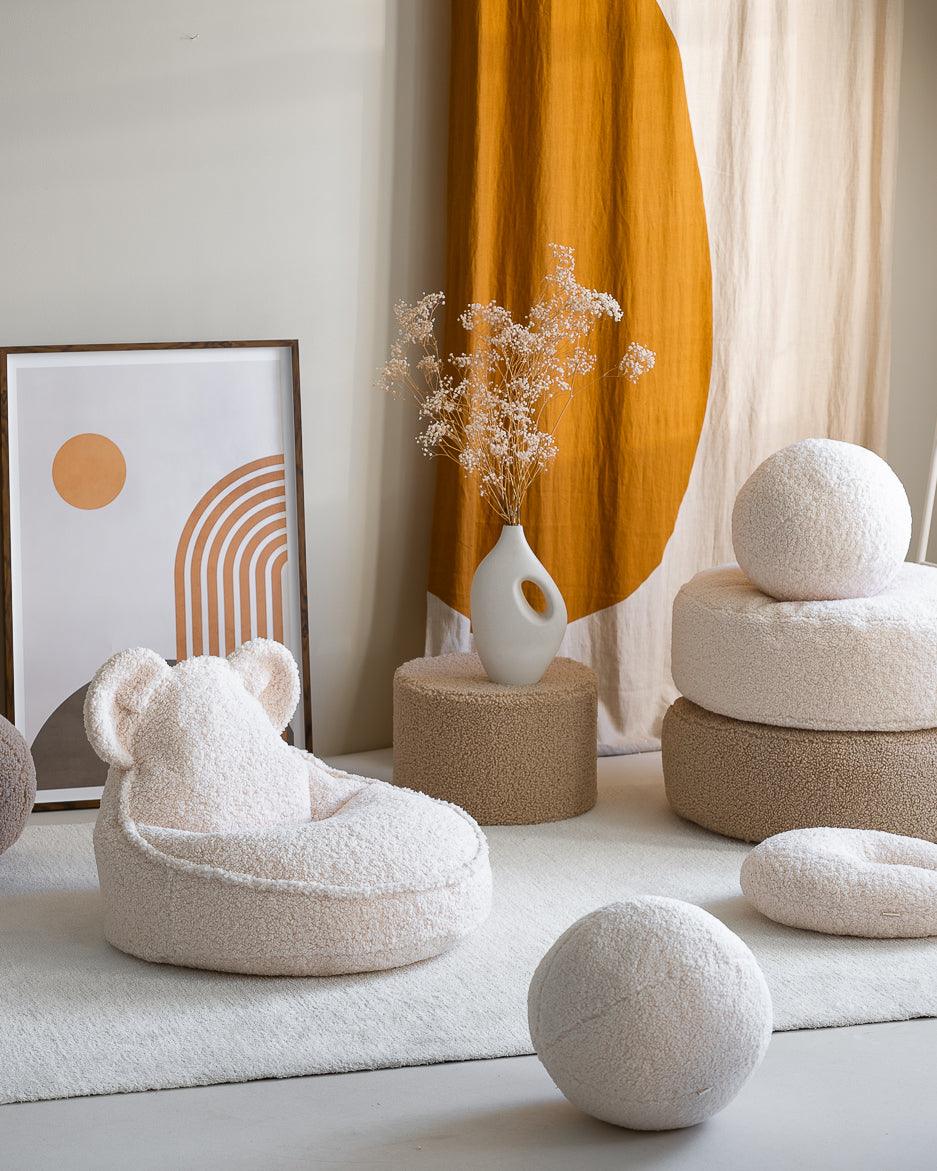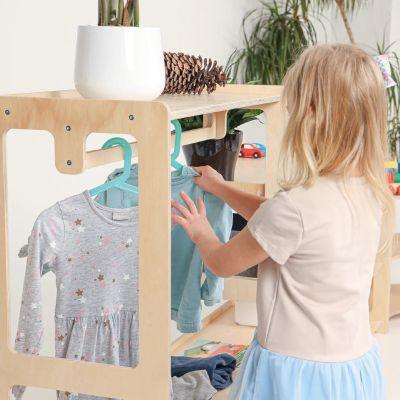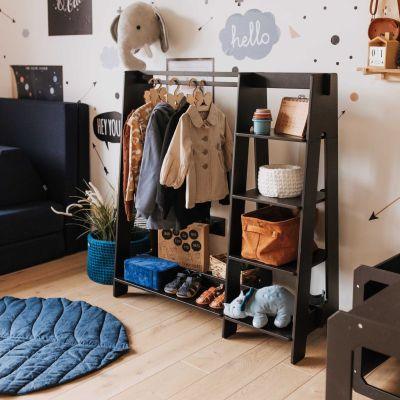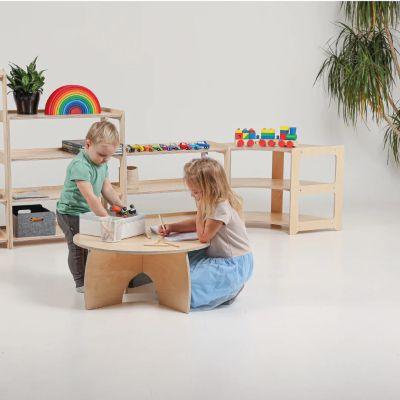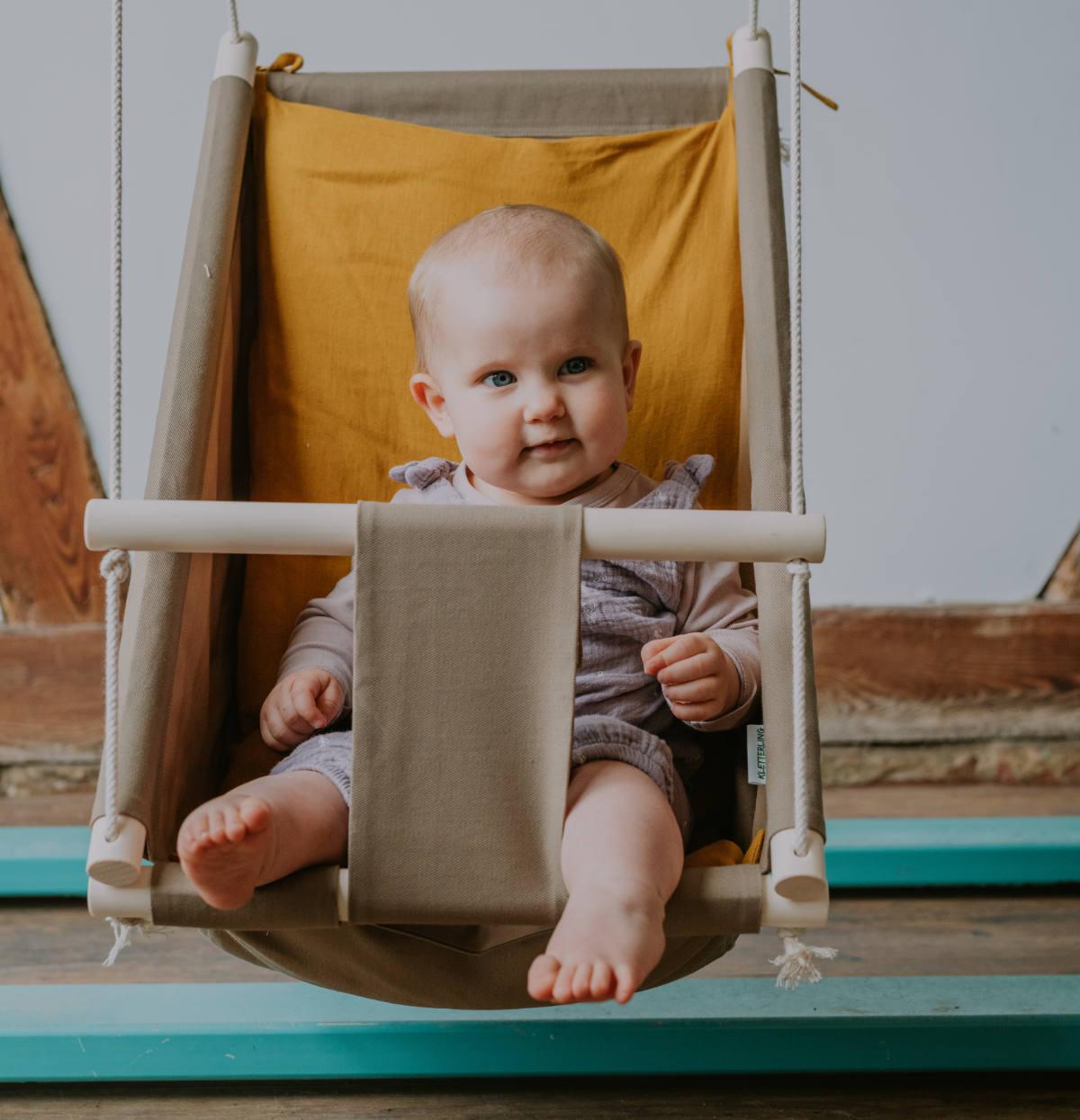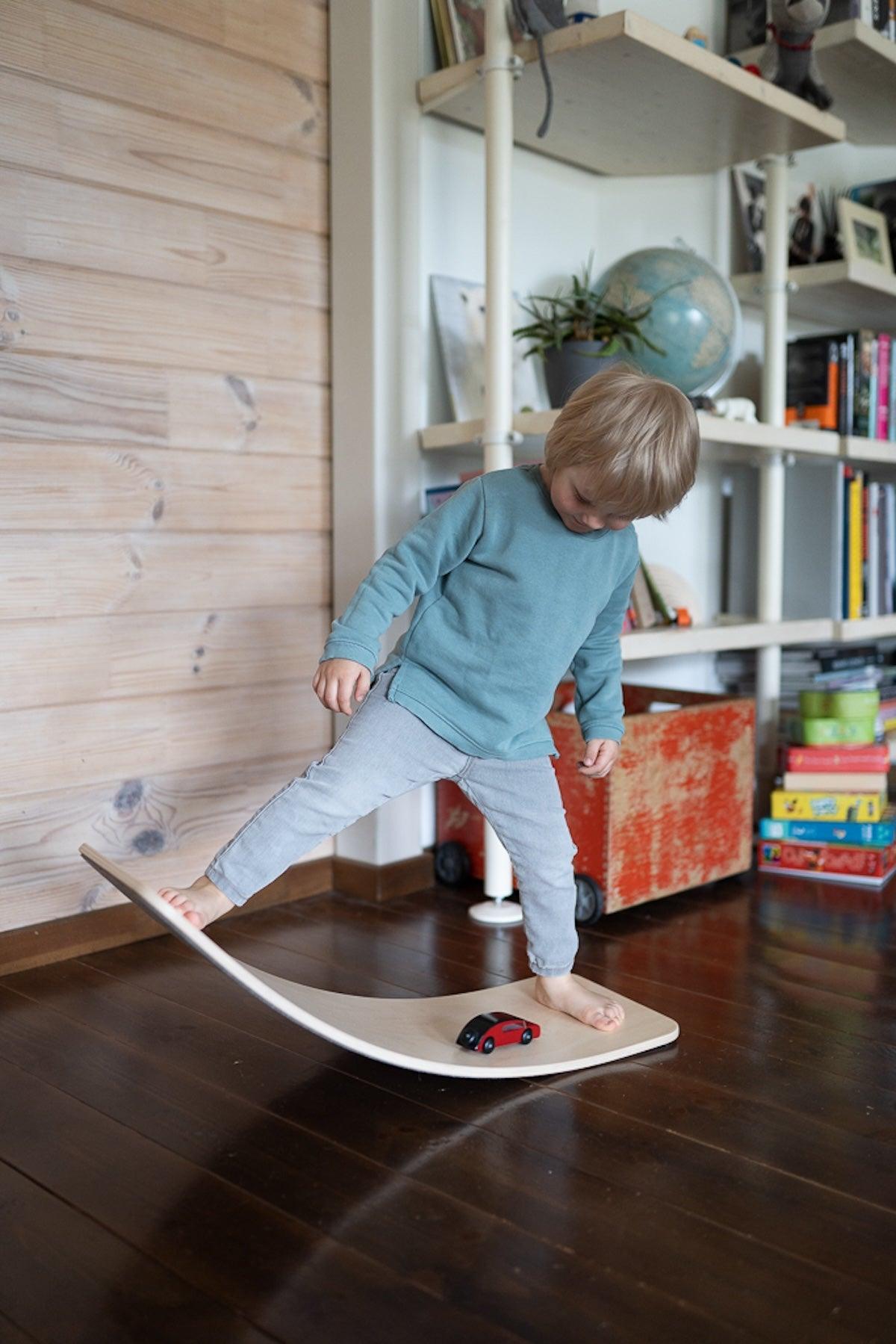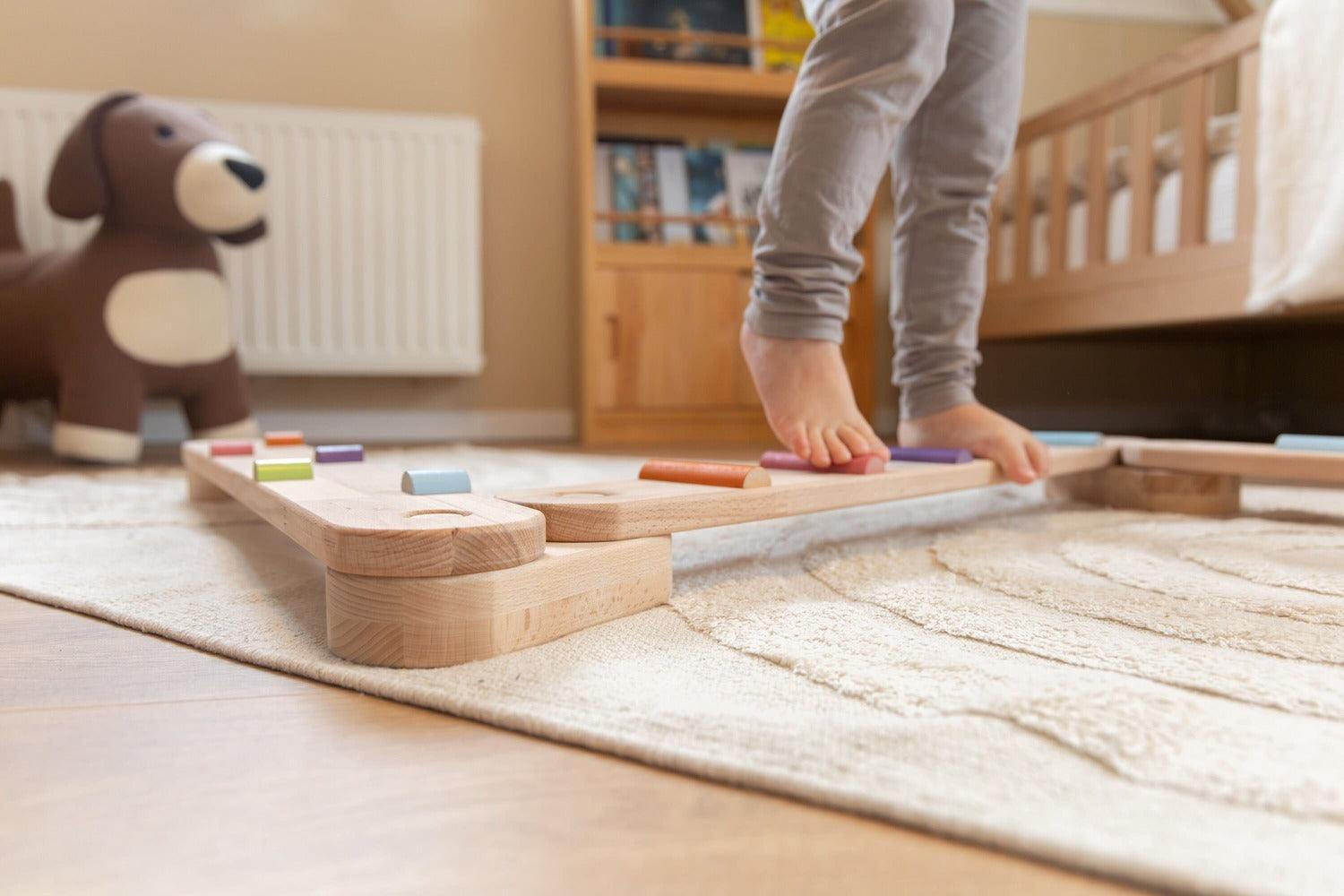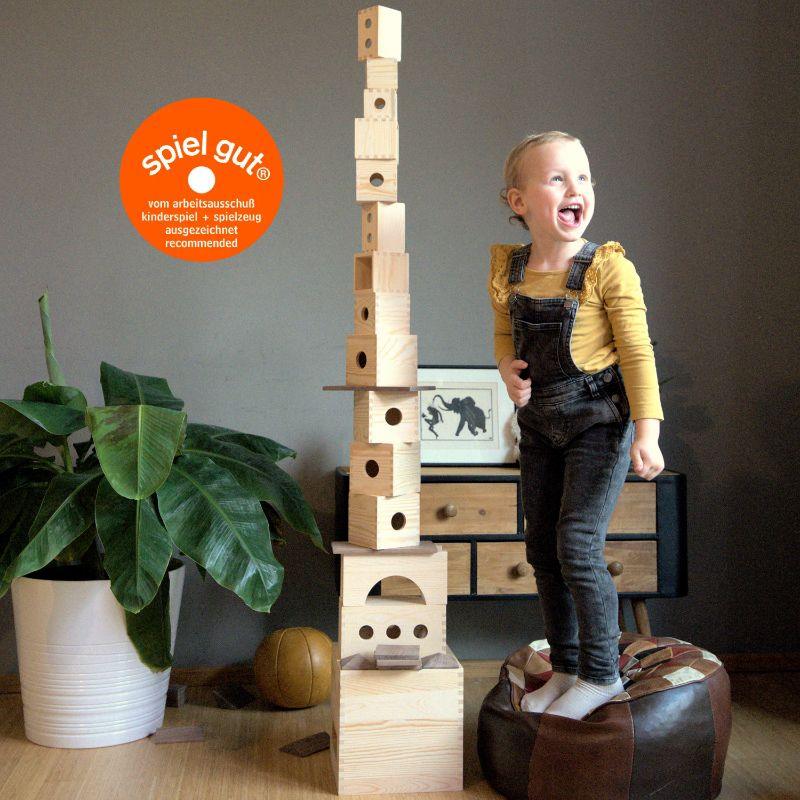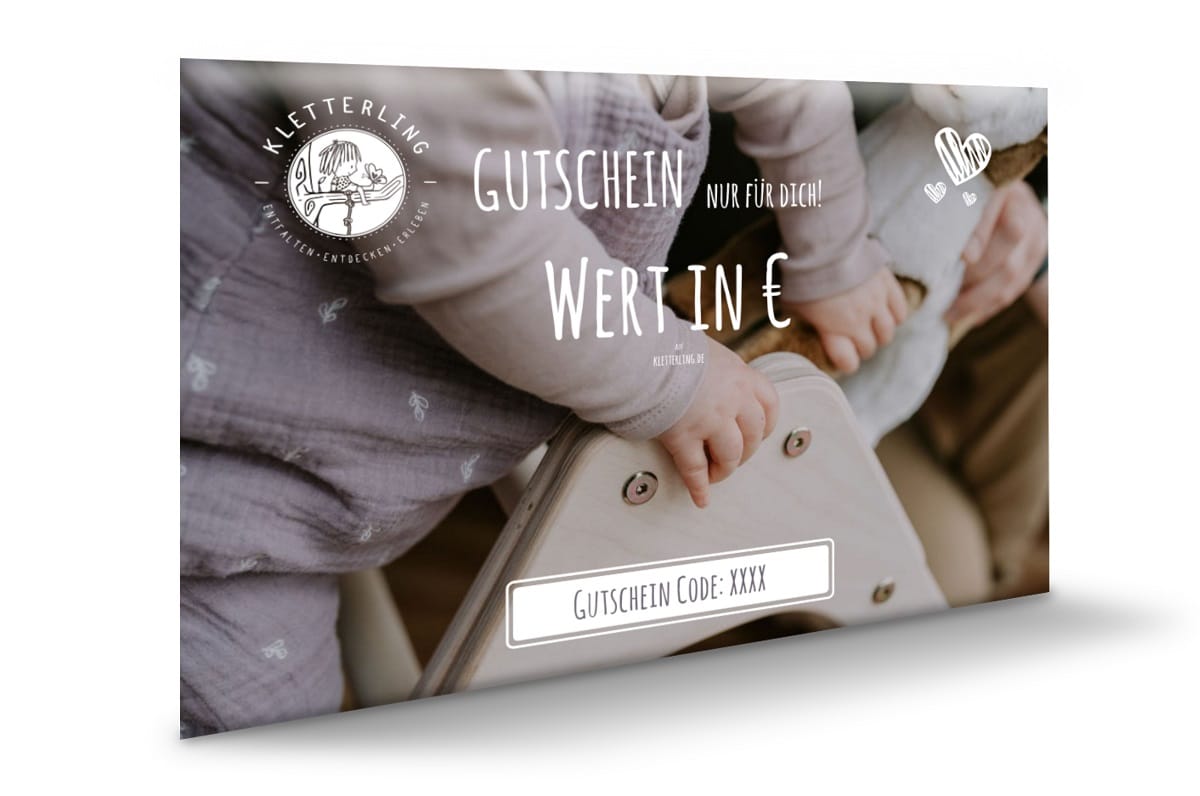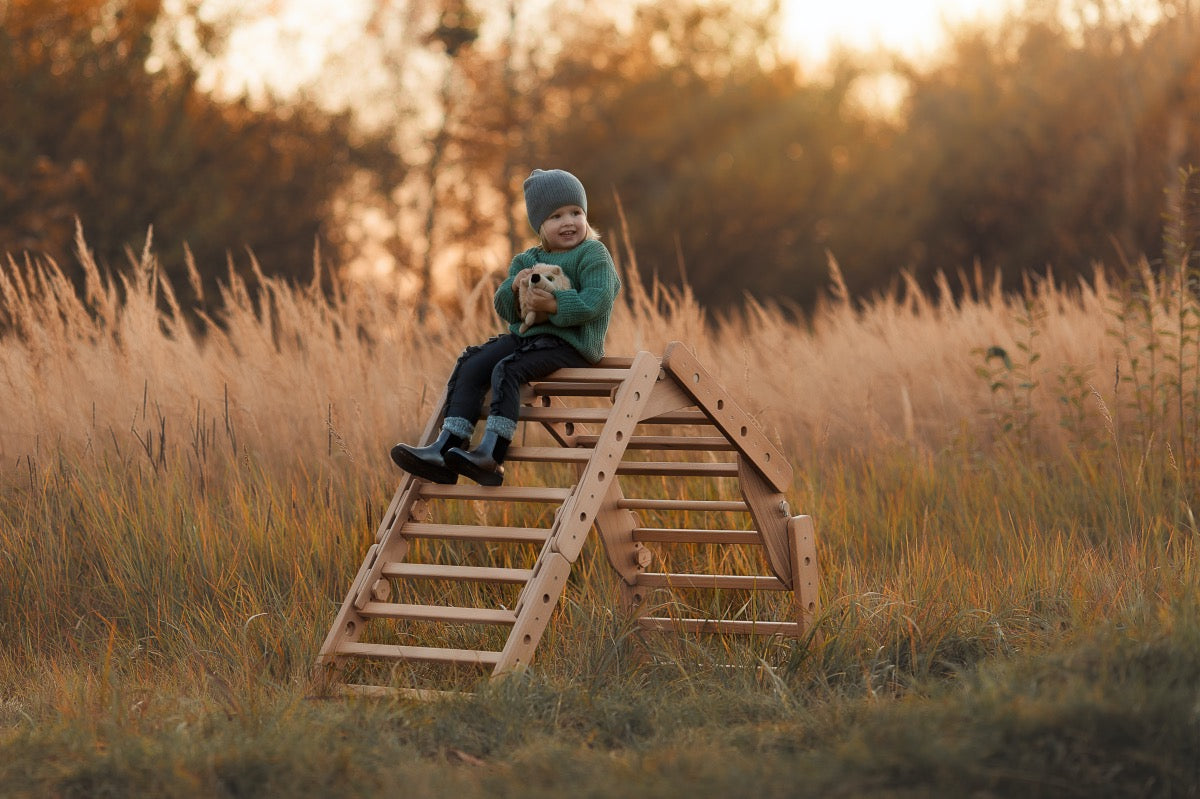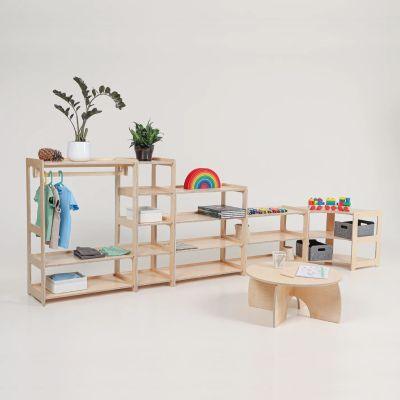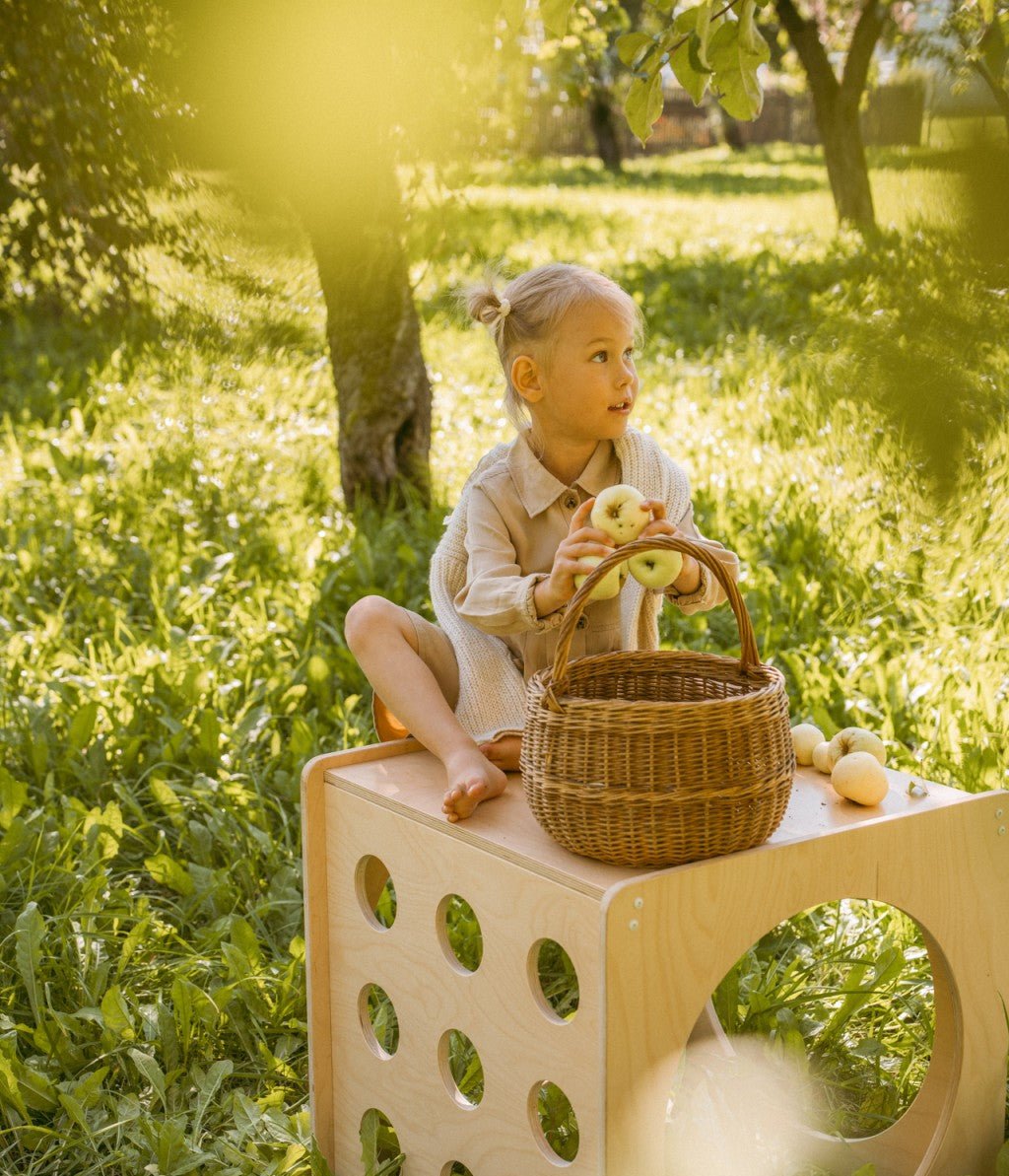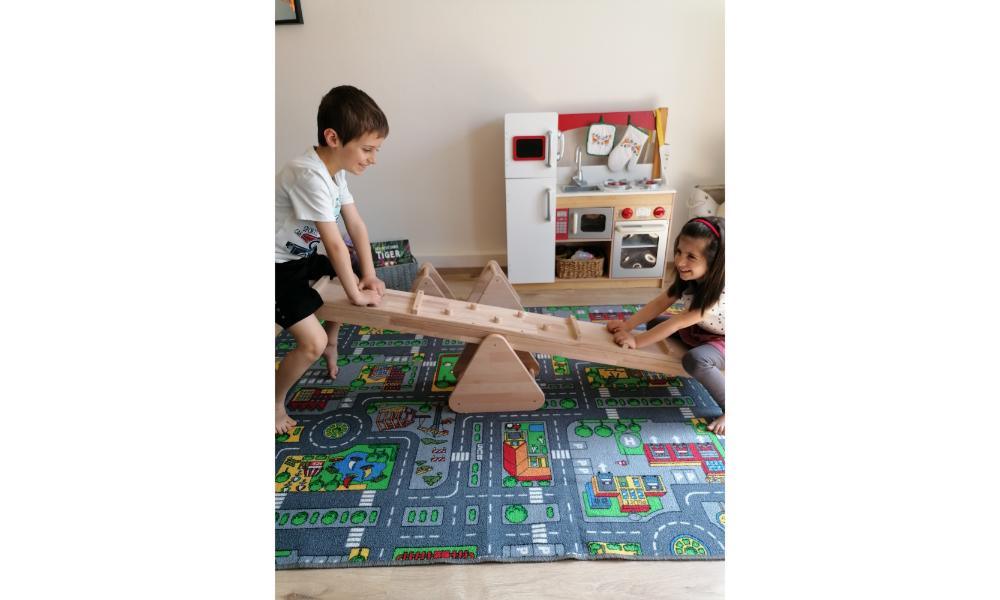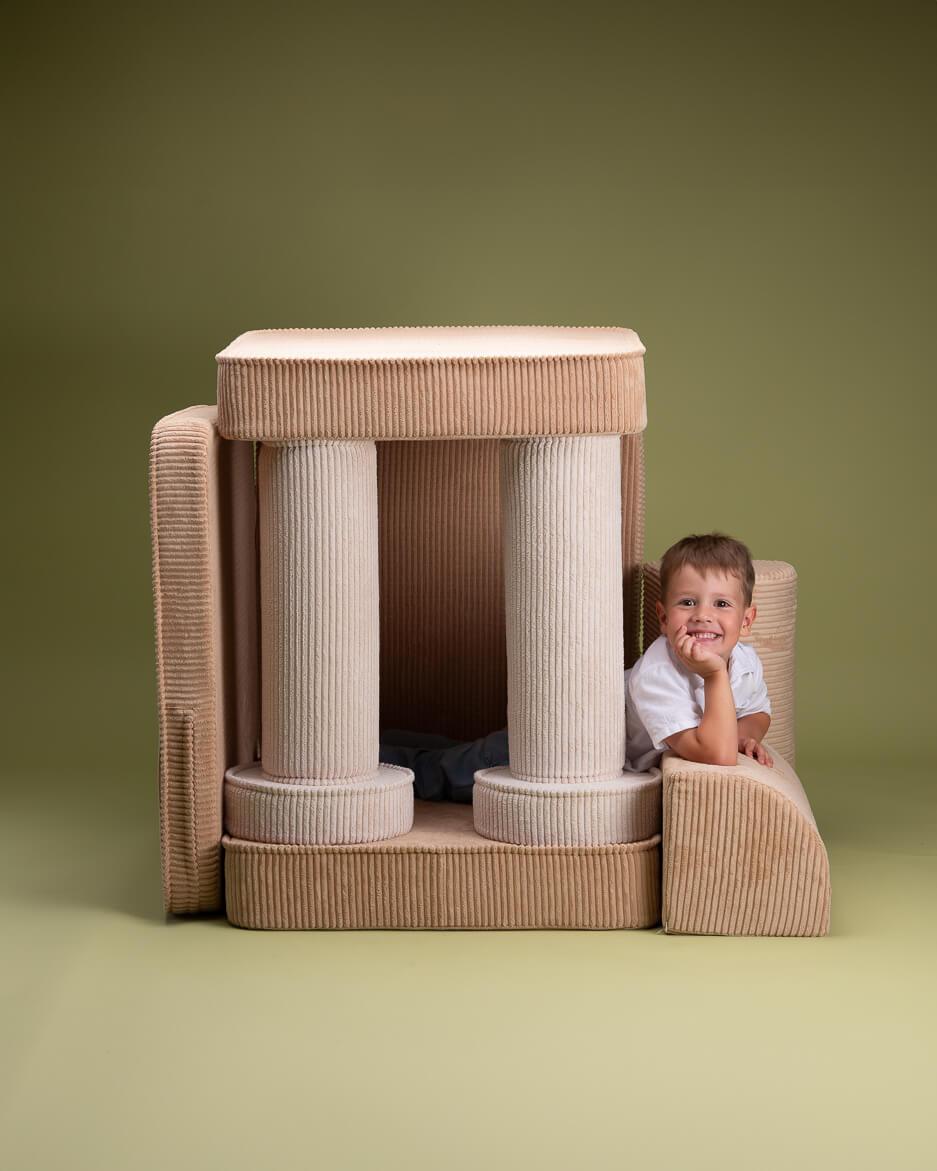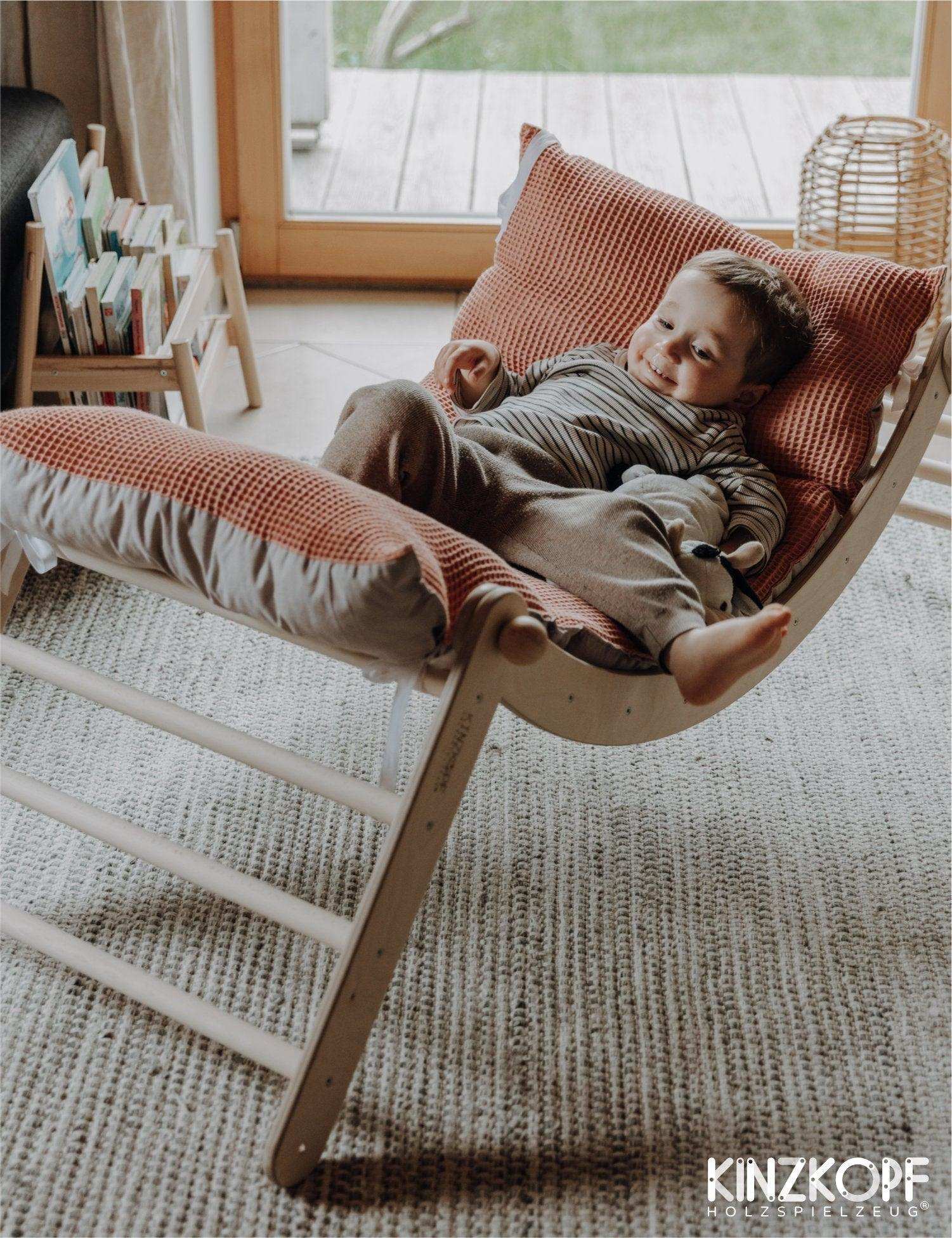Sort by:
3 products
3 products
Discover the Montessori wardrobe: A key to children's independence in the nursery
The Montessori Wardrobe is a thoughtful children's room organisation solution that captures the essence of Montessori principles. Meticulously handcrafted by KateHaa with special attention to quality and detail, our Montessori children's wardrobe offers a dedicated space for clothes, shoes and other clothing accessories. It teaches children a sense of order and ensures that clothes are easily accessible
.The robust construction and Scandinavian design with optimal size make this wardrobe an ideal addition to any child's room. Its innovative corner design maximises the efficiency of the room layout.
The toddler wardrobe keeps clothes, shoes and other accessories neatly organised and easily accessible for the child. This promotes the development of independence and autonomy in children. From now on, they can choose their own clothes.
Transformyour child's room into an inspiring Montessori room
Invest today in the future of your child's education and independence with our Montessori furniture. Our wardrobe transforms the nursery into a dynamic, Montessori-inspired space that encourages independence and takes the pressure off you, giving you more time for other things
Product details of the Montessori wardrobe
| Feature | |
|---|---|
| Details | |
| Length | |
| 75 cm | |
| Width | |
| 40 cm | |
| Height | |
| 106 cm | |
| Finish | |
| With water-based varnish and colour for smooth, comfortable play and easy cleaning | |
| Materials | |
| Sustainably sourced birch wood and Baltic birch plywood | |
| Weight limit | |
| All our products are tested to fulfil requirements and carry a load of at least 50 kg | |
| Certification | KateHaa activity toys are tested and certified by the SGS Institute in Germany in accordance with the Toy Safety Directive 2009/48/EC |
With the Montessori wardrobe, you give your child the opportunity to design and organise their environment independently. A step towards independence and a valuable contribution to your child's development. It also gives you more time for other things, which means less work for you.
Montessori children's clothes rack
| Product features | |
|---|---|
| Handmade in Latvia | |
| Dimensions | |
| Length: 96 cm, width: 35 cm, height: 103.5 cm | |
| Dimensions from paddle shelf to hanging device | |
| 89.5 cm | |
| Material | |
| Baltic birch plywood, thickness: 1.2 cm | |
| Age recommendation | |
| 1 - 16 years | |
| Load capacity | |
| 45 kg | |
| Product weight | |
| 6.9 kg | |
| Package contents | Product, assembly material, required tools, assembly instructions |
This children's clothes rack is not only easily accessible and compact, but also generously designed to meet all clothing storage needs. It is ideal for dressing up storage, organising wardrobes, storing baby clothes, storing children's clothes and even for bedroom needs
Made from high quality Baltic birch plywood, this rack offers a load capacity of up to 45kg thanks to its robust construction. The design without screws or tools makes assembly quick and easy. With a total of 17 separate hanging options, the clothes rack offers an excellent overview and accessibility to all clothing
.
Klettas tip
Buying this children's clothes rack is an investment in your child's tidiness and independence, while at the same time supporting sustainable and environmentally friendly production methods. This high-quality, durable piece of furniture is manufactured according to strict environmental standards and is an expression of our commitment to promoting responsible consumer habits. Trust Kletterling when it comes to combining quality, safety and sustainability.
Suchst du nach einem Geschenk, das garantiert Freude bereitet und genau den Geschmack des Beschenkten trifft? Mit einem Kletterling Geschenkgutschein liegst du immer richtig! Unser Gutschein ist die ideale Lösung für alle, die Kindern eine Freude machen möchten, aber nicht sicher sind, welches unserer hochwertigen Spielgeräte am besten passt.
Warum ein Kletterling Gutschein das perfekte Geschenk ist
Ein Geschenkgutschein von Kletterling bietet weit mehr als nur einen Warenwert – er schenkt Wahlfreiheit, Vorfreude und die Möglichkeit, genau das Spielgerät auszusuchen, das perfekt zu den individuellen Bedürfnissen und Wünschen des Kindes passt.
Die Vorteile unseres Gutscheins auf einen Blick:
• Flexible Auswahl – Der Beschenkte kann selbst entscheiden, ob er einen Kletterbogen, eine Matschküche, ein Kindersofa oder eines unserer vielen anderen Qualitätsprodukte wählt
• Langfristige Gültigkeit – Unser Gutschein ist 3 Jahre lang einlösbar, sodass genügend Zeit für die perfekte Auswahl bleibt
• Persönliches Geschenk – Du kannst den Gutscheinbetrag frei wählen und so an dein Budget anpassen
• Einfache Einlösung – Problemlose Verwendung in unserem Online-Shop mit nur wenigen Klicks
• Sofort verfügbar – Nach dem Kauf erhältst du den Gutschein direkt per E-Mail zum Ausdrucken oder Weiterleiten
So funktioniert der Kletterling Gutschein
Unser Gutscheinsystem ist bewusst einfach und unkompliziert gestaltet:
1. Wunschbetrag auswählen – Entscheide dich für einen Betrag deiner Wahl
2. Bestellen und bezahlen – Wie bei einem normalen Produkt in unserem Shop
3. Gutschein erhalten – Der Gutscheincode wird dir per E-Mail zugesendet
4. Verschenken – Drucke den Gutschein aus oder leite die E-Mail weiter
5. Einlösen – Der Beschenkte kann den Gutscheincode bei seiner Bestellung im Warenkorb einlösen
Der perfekte Anlass für einen Kletterling Gutschein
Ob Geburtstag, Weihnachten, Ostern oder einfach als Überraschung zwischendurch – ein Kletterling Gutschein passt zu jedem Anlass:
• Zum Geburtstag – Schenke die Freiheit, sich einen langgehegten Wunsch zu erfüllen
• Zu Weihnachten – Der ideale Gutschein für unter den Weihnachtsbaum
• Zur Geburt oder Taufe – Ein wertvolles Geschenk, das für die Zukunft des Kindes investiert wird
• Für Großeltern, Paten und Freunde – Die perfekte Lösung, wenn man nicht täglich mit dem Kind zusammen ist und seine aktuellen Wünsche kennt
Qualität und Werte schenken
Mit einem Kletterling Gutschein verschenkst du nicht nur einen Warenwert, sondern auch unsere Philosophie: hochwertige, entwicklungsfördernde Spielgeräte, die mit Liebe zum Detail gefertigt werden und Kindern helfen, ihre motorischen und kognitiven Fähigkeiten spielerisch zu entfalten.
Unser Sortiment umfasst ausschließlich Produkte, die wir sorgfältig ausgewählt haben und hinter denen wir als Familienunternehmen mit unserem Namen stehen. Von nachhaltigen Materialien bis hin zu durchdachten Designs – wer bei Kletterling einkauft, entscheidet sich für Qualität und Nachhaltigkeit.
Tipp: Wenn du unsicher bist, welchen Betrag du wählen sollst, orientiere dich an unseren Produktkategorien. Für Kletterdreiecke oder kleinere Spielgeräte eignen sich Beträge ab 100 €, für größere Klettergerüste oder Komplettsets kannst du auch höhere Summen verschenken.
Fazit: Ein Kletterling Geschenkgutschein ist die perfekte Lösung für alle, die Kindern eine Freude machen und gleichzeitig die Entscheidungsfreiheit schenken möchten. Mit seiner langen Gültigkeit, der einfachen Einlösung und der Möglichkeit, aus unserem gesamten hochwertigen Sortiment zu wählen, wird dieser Gutschein garantiert für leuchtende Kinderaugen sorgen.
Schenke Spielfreude, Entwicklungsförderung und Qualität – mit einem Kletterling Geschenkgutschein!
Entdecke Kletterling
Kletterdreiecke sind nur der Start in eine bewegte Kindheit. Du findest bei uns Kindermöbel, Sprossenwände, Sitzsäcke, Sofas, Schaukeln und noch so viel mehr.

Familienunternehmen mit Herz
Persönlich beraten
Wir beraten dich persönlich in Entwicklungs- und Einrichtungsfragen bequem zu Hause. Schon ein paar leicht aufzustellende und sichere Bewegungselemente, wie ein Kletterdreieck, verändern die Auslastung deines Kindes und damit seine Stimmung zum Positiven. Doch das ist nur der Anfang, mit uns kannst du euer Zuhause in einen Ort verwandeln, in dem dein Kind jederzeit seinem Bedürfnis nach Bewegung und Entspannung nachgehen kann und dann passiert etwas Magisches, wie von Zauberhand zieht Gelassenheit bei euch ein, in deinem Kind und in dir!
Wir sind Isabell, Erik und Kosmo. Gegründet haben wir Kletterling aus der Not heraus: Qualität wird so oft mit Marketing-Blabla vorgetäuscht. Wir wollen so viel Transparenz, wie möglich ist. Aus welchem Material ist mein Kinderspielzeug, woher kommt es und wurden Chemikalien verwendet? Wie steht es um die Sicherheit und wird es wirklich in Europa produziert? In China produziert, in Deutschland zusammengebaut und dann Made in Germany, gibt es bei uns nicht. Alle Produkte stammen von kleinen Herstellern aus Europa, denen wir hier ihre verdiente Plattform bieten. Dabei hapert es meist am Kundendienst in einer fremden Sprache, den wir komplett übernehmen, weil wir es lieben, mit euch im Austausch zu stehen, was heutzutage leider immer seltener wird.
Außerdem kaufst du bei uns mit sicheren Zahlmethoden in Deutschland bei einem deutschen Unternehmen ein, was dir ein gutes Gefühl und Sicherheit bringt, damit du dich voll auf das konzentrieren kannst, weshalb du hier bist: Das richtige Bewegungsspielzeug für dein Kind zu finden.
Danke für dein Vertrauen!
- Isabell & Erik
Kategoriebeschreibung
Children's wardrobe: Promote order and independence
 A child-friendly wardrobe is more than just a place to store jackets and shoes.
A child-friendly wardrobe is more than just a place to store jackets and shoes.
It plays a crucial role in teaching children independence and order.
When furnishing such a room, practical considerations are just as important as an attractive design that appeals to the little ones and motivates them to tidy up their things independently.
In this article, you will learn how to create a functional yet attractive wardrobe for children.
From clever storage solutions to child-friendly design ideas, you'll find everything you need to create an inviting and tidy space.
Let's find out together how you can create the perfect wardrobe for your little family members in a few simple steps that both meets their needs and adds a touch of cheer to your home.
What material should a child’s wardrobe be made of?
Now that we've learned the importance of a child-friendly wardrobe, the question now arises as to the ideal material. A children's wardrobe must not only be practical and attractive, but also safe and durable. Here are some materials that are particularly suitable.
 Wood
Wood
Wood is the first choice when it comes to kindergartens. It's robust, natural, and has a warm feel. Wooden children's coat racks fit in with almost any interior design style in a nursery or hallway. Models made of untreated solid wood or with child-safe varnish in cheerful colors are particularly popular. Examples include pine, beech, or oak.
metal
Metal is another good choice for a children's wardrobe, primarily due to its stability and durability. Some designs combine metal with wooden elements to provide both stability and aesthetic warmth. Make sure the edges are rounded and the coatings are non-toxic.
plastic
For younger children, plastic can also be an option—provided it's free of harmful substances like BPA. Plastic wardrobes come in a variety of bright colors and shapes, making them very popular with children. They're lightweight and therefore easy to move or adjust.
Further considerations
Regardless of the material, safety precautions such as anti-tip fastenings should be a priority - especially for freestanding models.
Choosing the right children's wardrobe also includes well-thought-out details such as rounded corners and child-friendly heights of hooks or shelves.
A children's wardrobe should not only beautify the room, but also take safety and environmental aspects into account - regardless of whether it is made of wood, metal or plastic.
This way, you can ensure that your little ones enjoy tidying up their own things and at the same time enjoy a healthy indoor climate.
At what height should a children's wardrobe be installed?
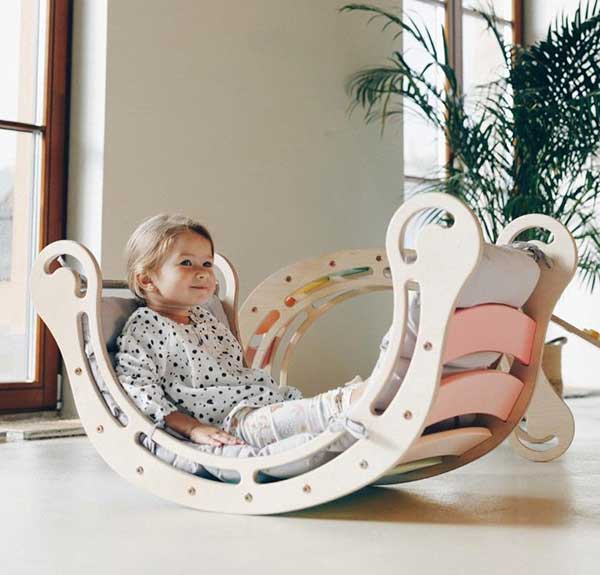 The mounting height of a children's wardrobe is crucial so that your child can hang up and take down his or her things independently.
The mounting height of a children's wardrobe is crucial so that your child can hang up and take down his or her things independently.
A child-friendly wardrobe not only promotes order in the child's room, but also supports the development of your child's motor skills.
Here are some guidelines to help you determine the ideal height for your child's wardrobe.
Optimal height depending on age
- Babies and toddlers (up to 3 years): For this age group, it's recommended to install coat hooks or coat racks at a height of approximately 70 to 80 cm above the floor. This allows the little ones to make their first attempts at hanging up their clothes themselves.
- Kindergarten-age children (3-6 years): A mounting height of approximately 100 to 120 cm is ideal. At this height, children can easily reach and put down or hang up their jackets and backpacks independently.
- Schoolchildren (ages 6 and up): A height of 120 to 150 cm is suitable for schoolchildren. This allows them to easily reach their wardrobe and have plenty of room to grow.
Consider individual needs
In addition to the general recommendations, it's important to consider the child's individual needs and abilities. Some children are taller or shorter than average, so adjusting the mounting height may be necessary.
- Adjustable systems: If possible, opt for adjustable wardrobe systems. This allows you to adjust the height of the wardrobe as your child grows.
- Child involvement: Actively involve your child in the process. Let them try to see if they can easily reach their jacket or backpack. This not only builds your child's confidence but also promotes independence.
By following these tips, you will create a friendly environment in your home while encouraging your child's independence and sense of responsibility.
At what age do children need a wardrobe?
 If you're wondering when your child needs their own wardrobe, the answer is simpler than you think. As soon as your child can walk and shows interest in hanging up or putting away their clothes and accessories independently, it's time for a child-friendly wardrobe. Most children are ready between 18 months and 3 years old.
If you're wondering when your child needs their own wardrobe, the answer is simpler than you think. As soon as your child can walk and shows interest in hanging up or putting away their clothes and accessories independently, it's time for a child-friendly wardrobe. Most children are ready between 18 months and 3 years old.
The importance of early introduction
Introducing a children's wardrobe promotes children's independence and helps them take responsibility for their belongings. A children's wardrobe with a shelf offers additional space for hats, scarves, or gloves. Wooden models like the wooden children's wardrobe are not only robust but also fit harmoniously into the interior design of any child's room.
Choose adjustable solutions
Adjustable systems or freestanding wardrobes that grow with the child are ideal. A children's wardrobe at an accessible height allows even the youngest children to hang their jackets and backpacks themselves. For older children, a children's wall-mounted wardrobe in the hallway is a practical solution.
Colorful design motivates
Choose a coat rack in bright colors or with motifs that children love—for example, a children's room coat rack featuring motifs from favorite fairy tales or heroic characters. These elements further motivate little ones to keep things tidy.
In summary, the ideal time for a wardrobe begins with the child's interest in independence and organization—usually between the ages of one and three. With needs-based, grow-with-the-child systems and an attractive design, you can create a motivating space for your child to playfully learn to organize and apply it in everyday life.
Conclusion
With a child-friendly wardrobe, you not only promote your child's independence, but also their sense of order and responsibility.
A carefully selected wardrobe that meets your child's needs and growth will become a valuable part of their everyday life.
Make sure the design is as appealing as possible to increase your child's motivation.
With the right elements, your child's closet will become a place where they enjoy spending time and learning through play.
Frequently Asked Questions
When should you set up a separate children's wardrobe?
From the time children show interest in hanging up their own clothes. This usually occurs between 18 months and 3 years.
Why is a child-friendly wardrobe important?
A child-friendly wardrobe promotes independence and order in children. They learn to take responsibility for their belongings through play.
What design features should be considered when designing a children's wardrobe?
The coat rack should be height-adjustable, allowing it to grow with children. A colorful design with popular motifs can further motivate children to hang up their things neatly.
How can a child-friendly wardrobe contribute to children’s development?
By playfully promoting independence and a sense of order. Children experience positive reinforcement when they can hang up their clothes independently.
What are the advantages of adjustable children's wardrobes?
Adjustable children's wardrobes can be adapted to the size of the growing child, making them a long-term investment and allowing children to use their wardrobe independently for years to come.
Discover more in:Children's Room
Top Categories: Play Mats | Ball Pit | Children's Bookshelves | Children's Beds |Children's Wardrobes

